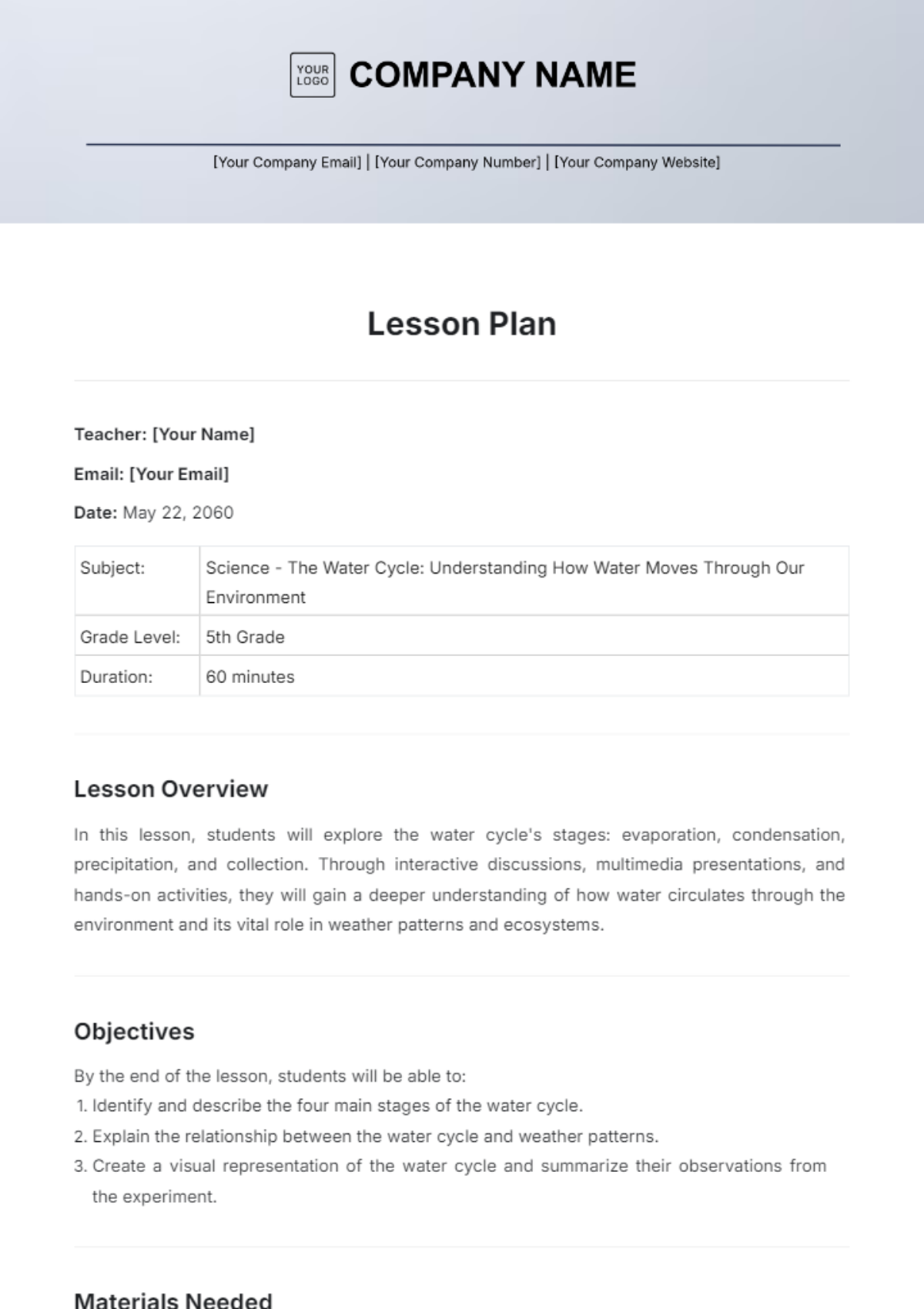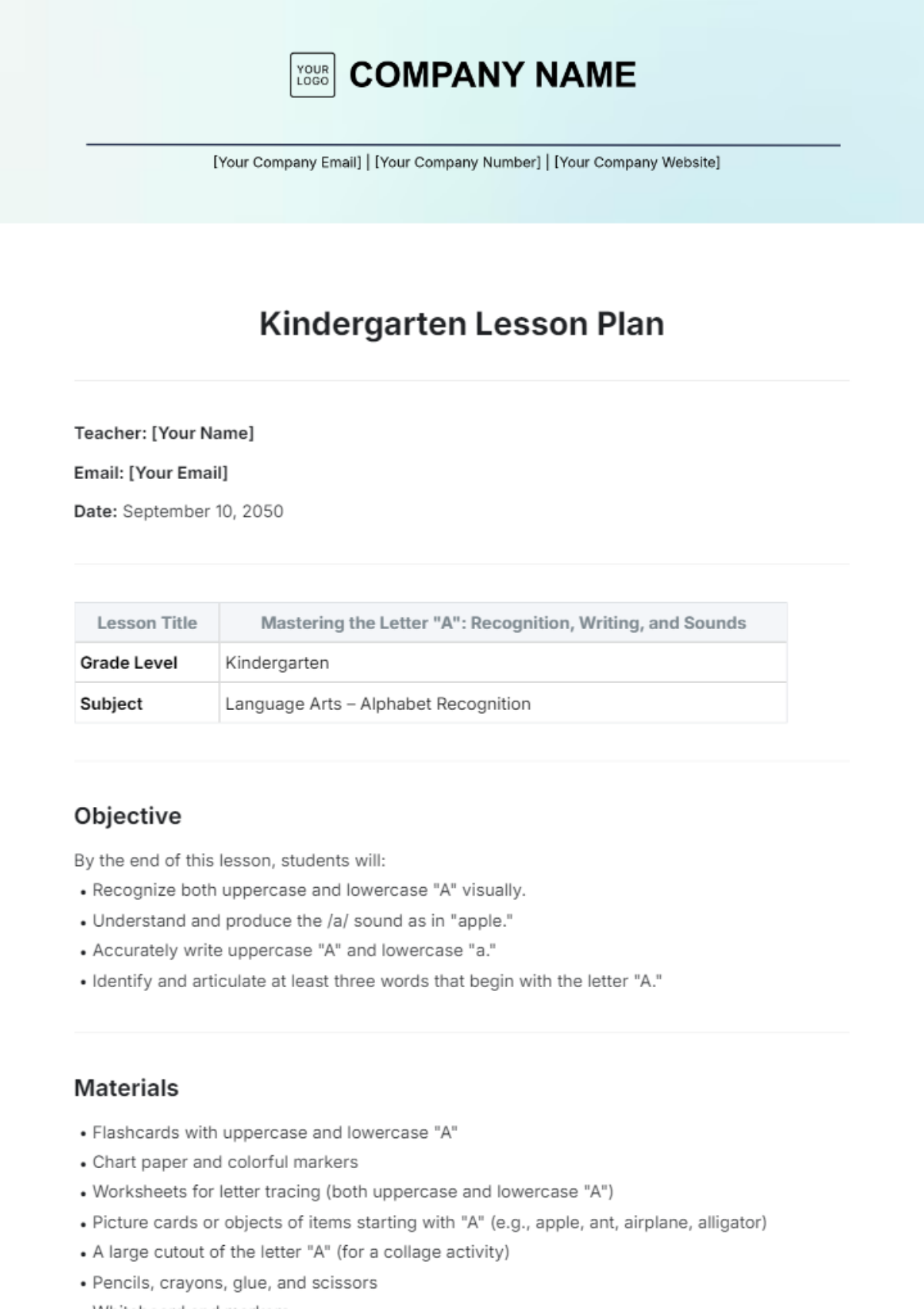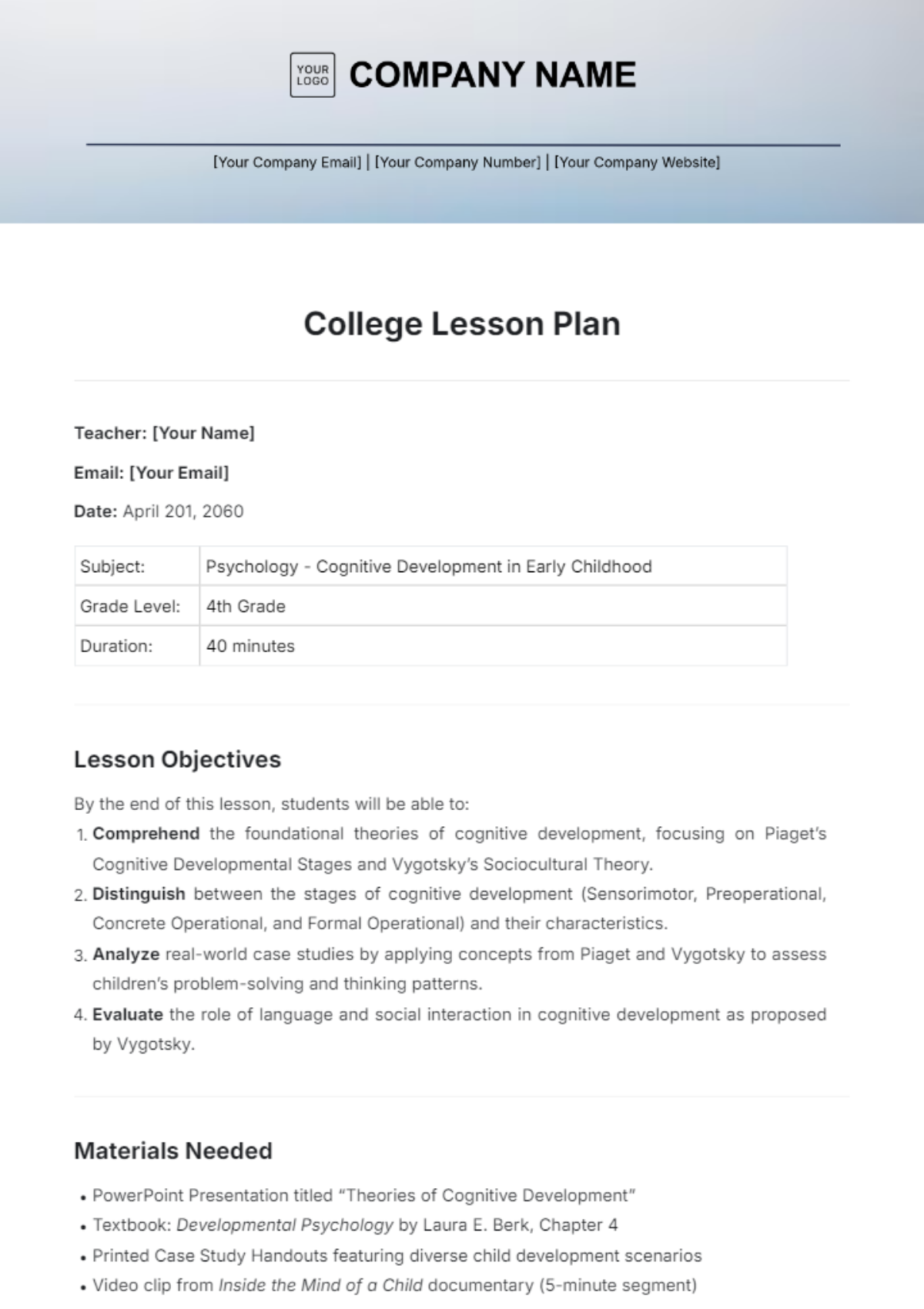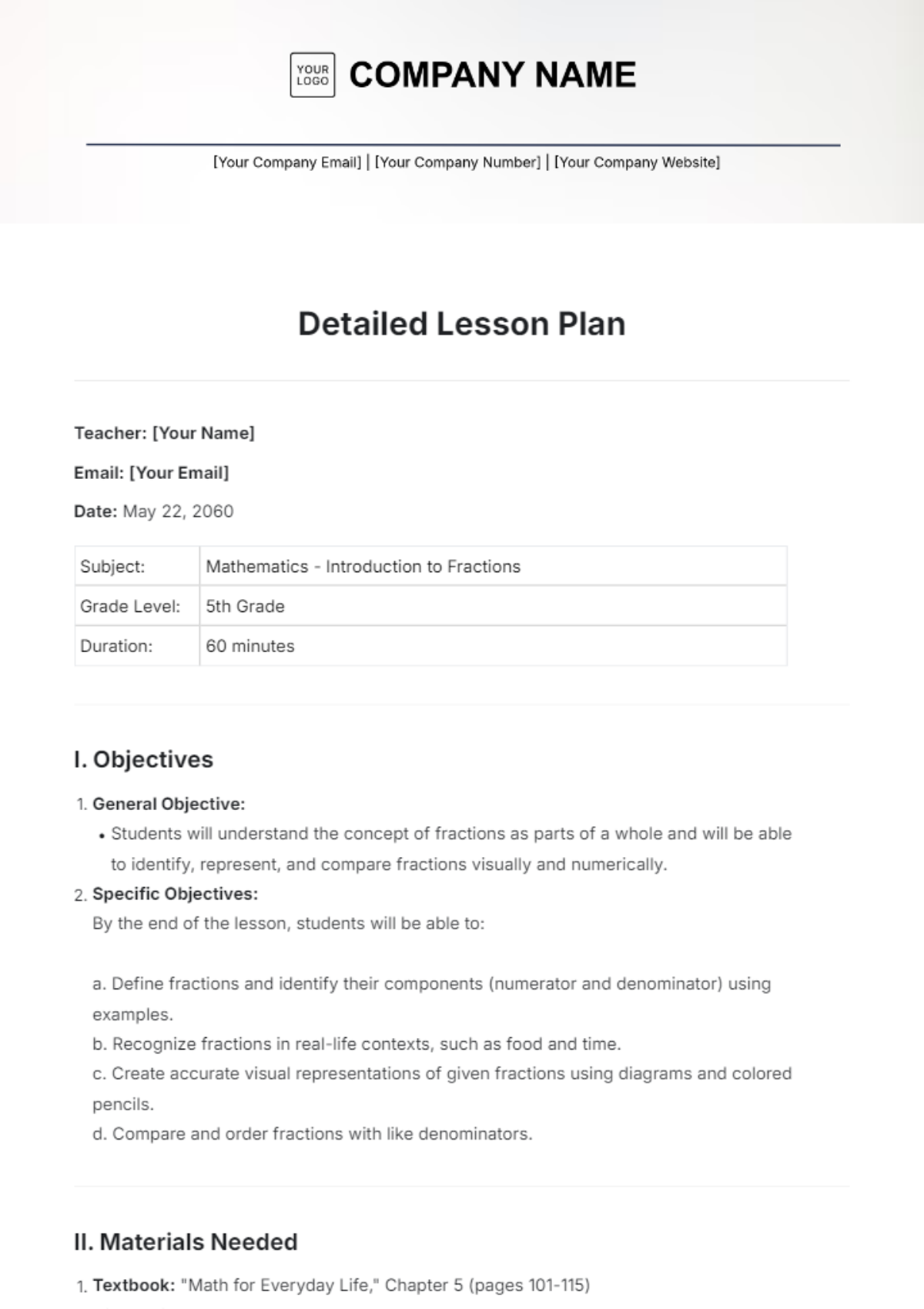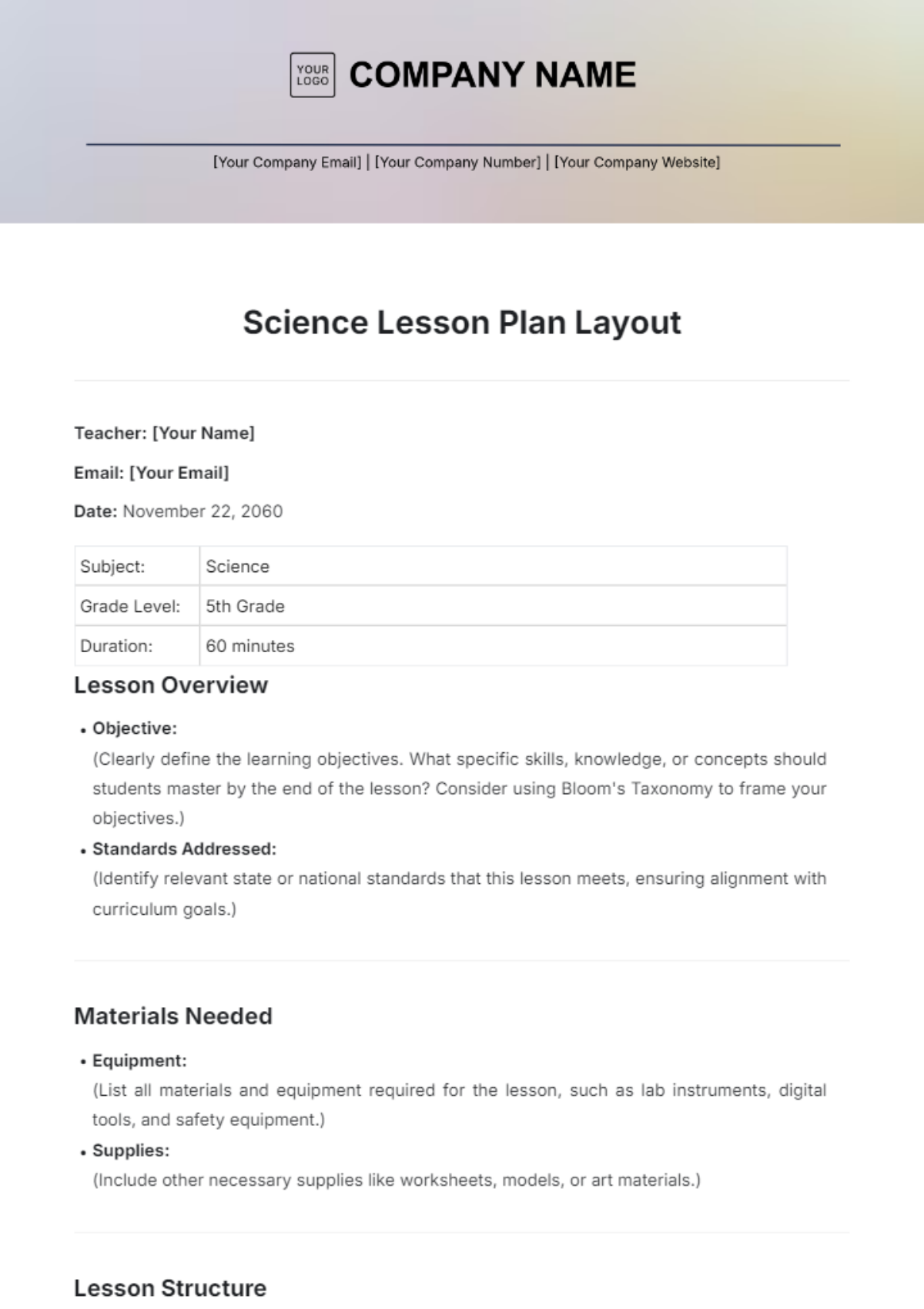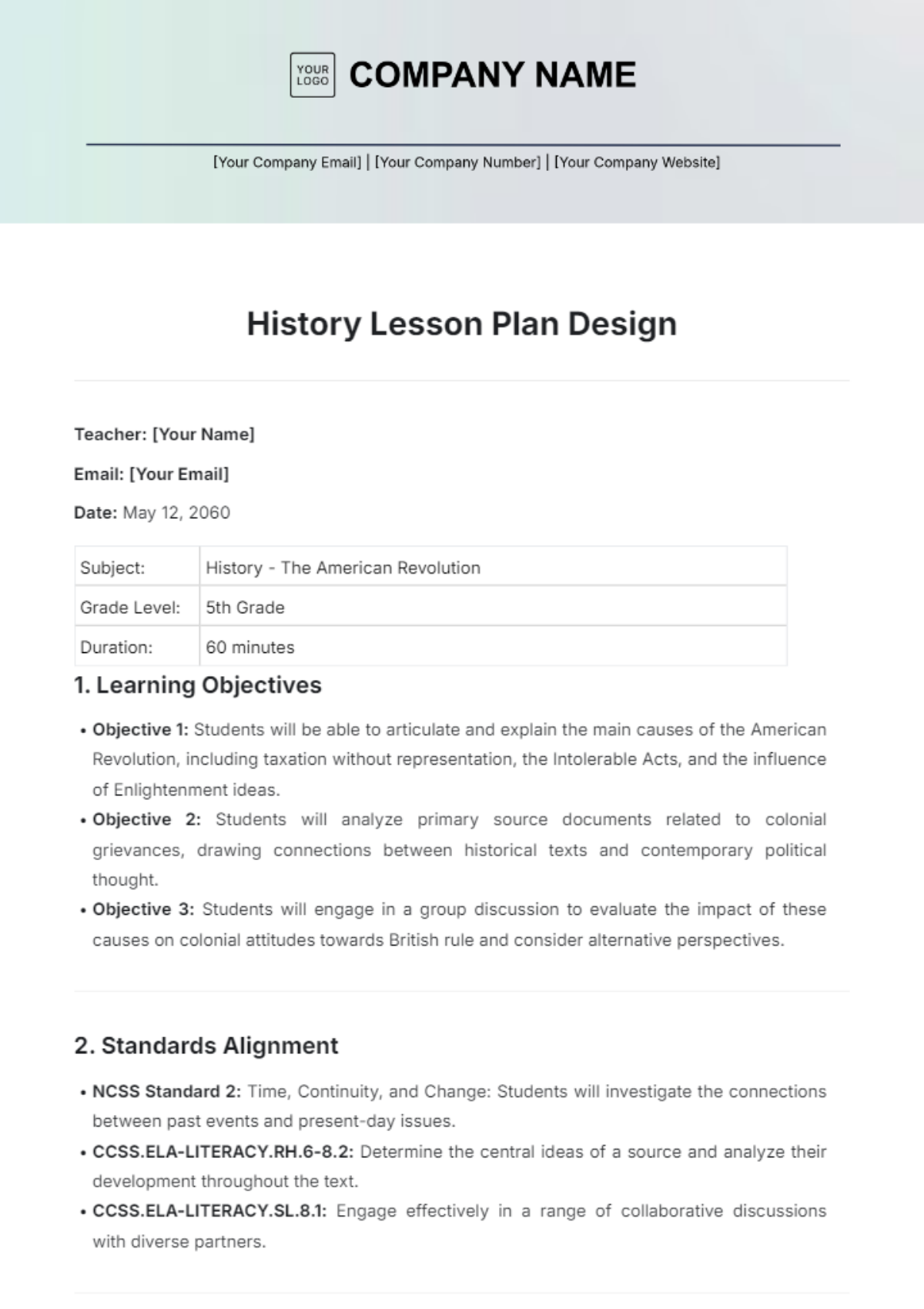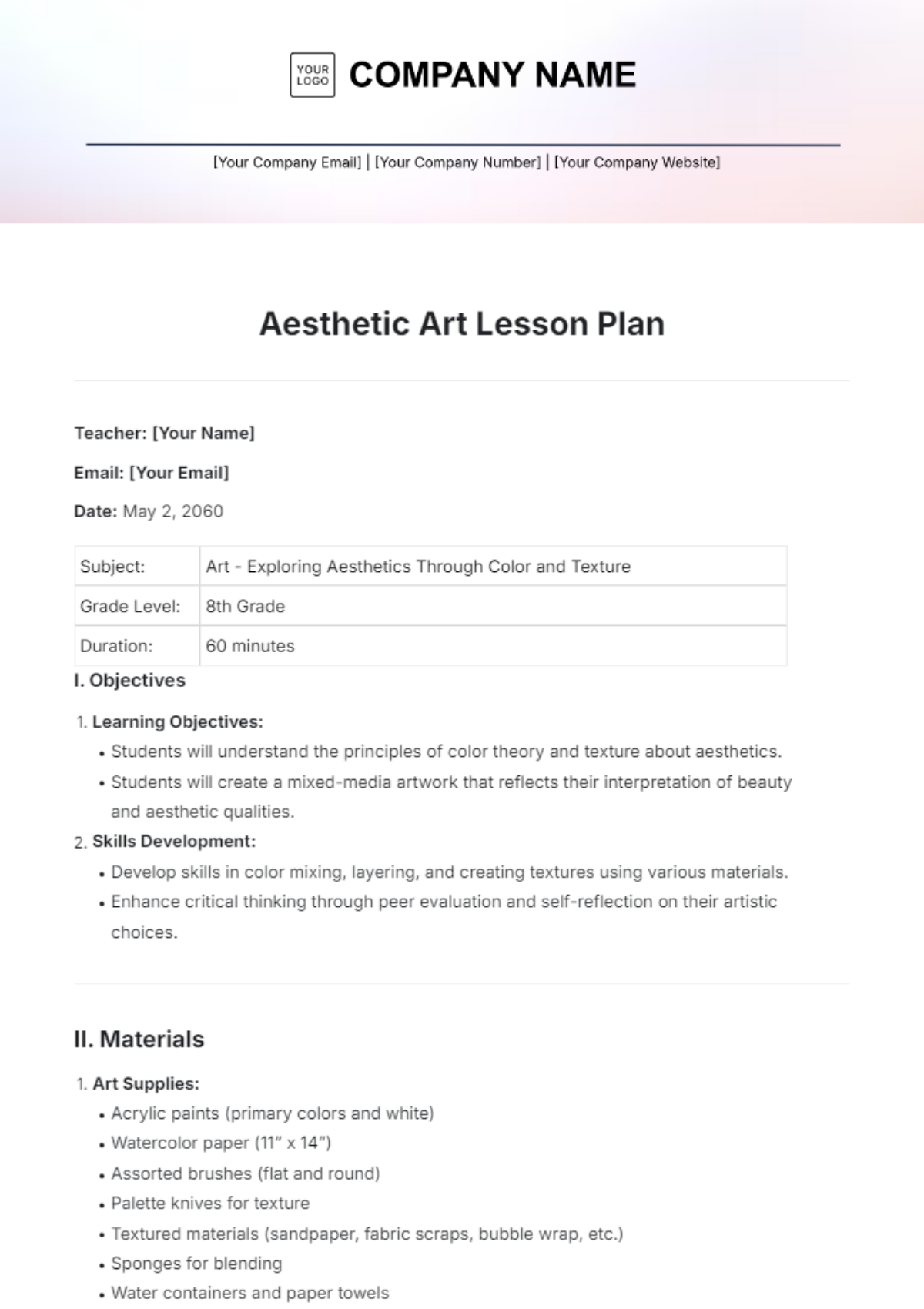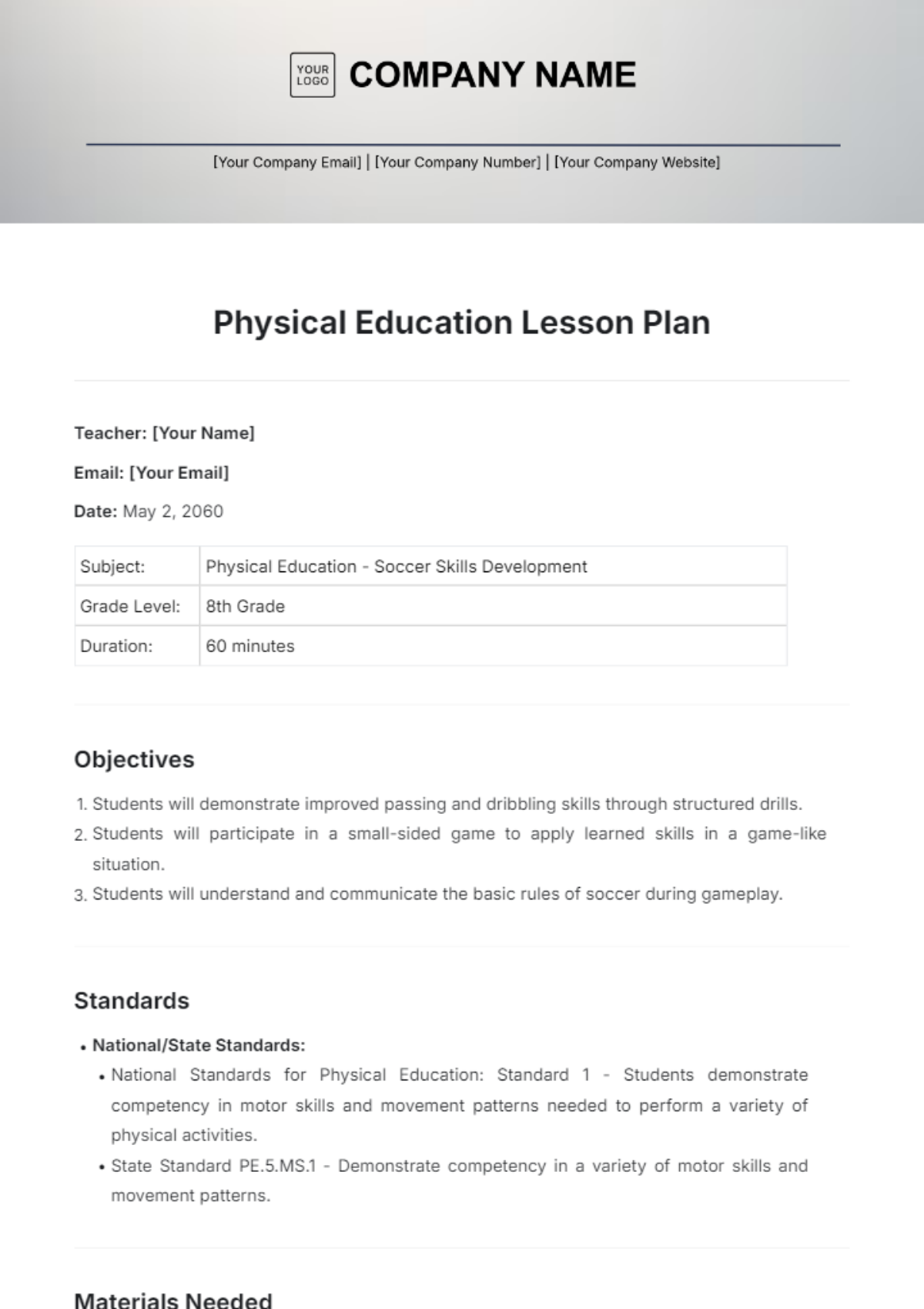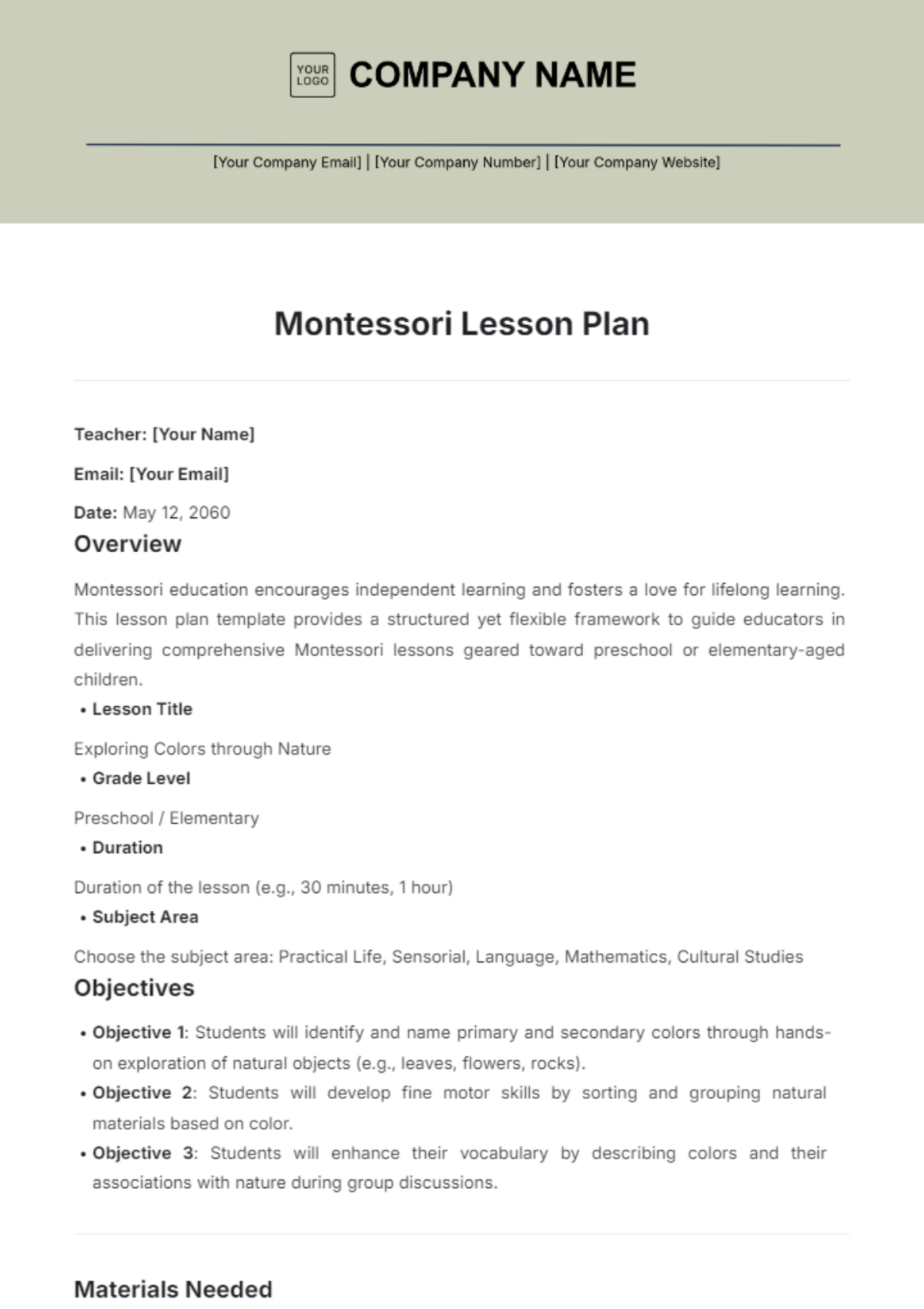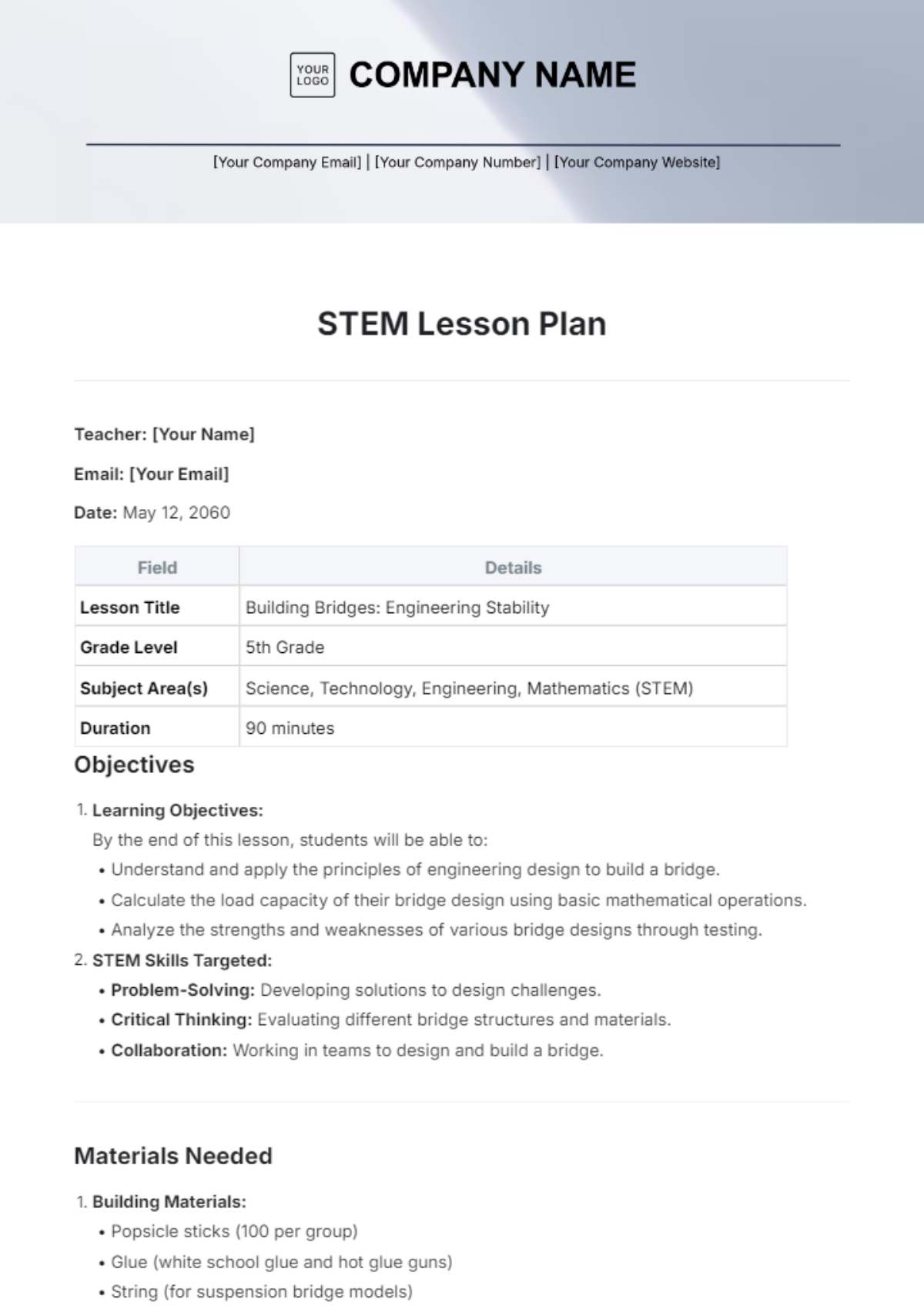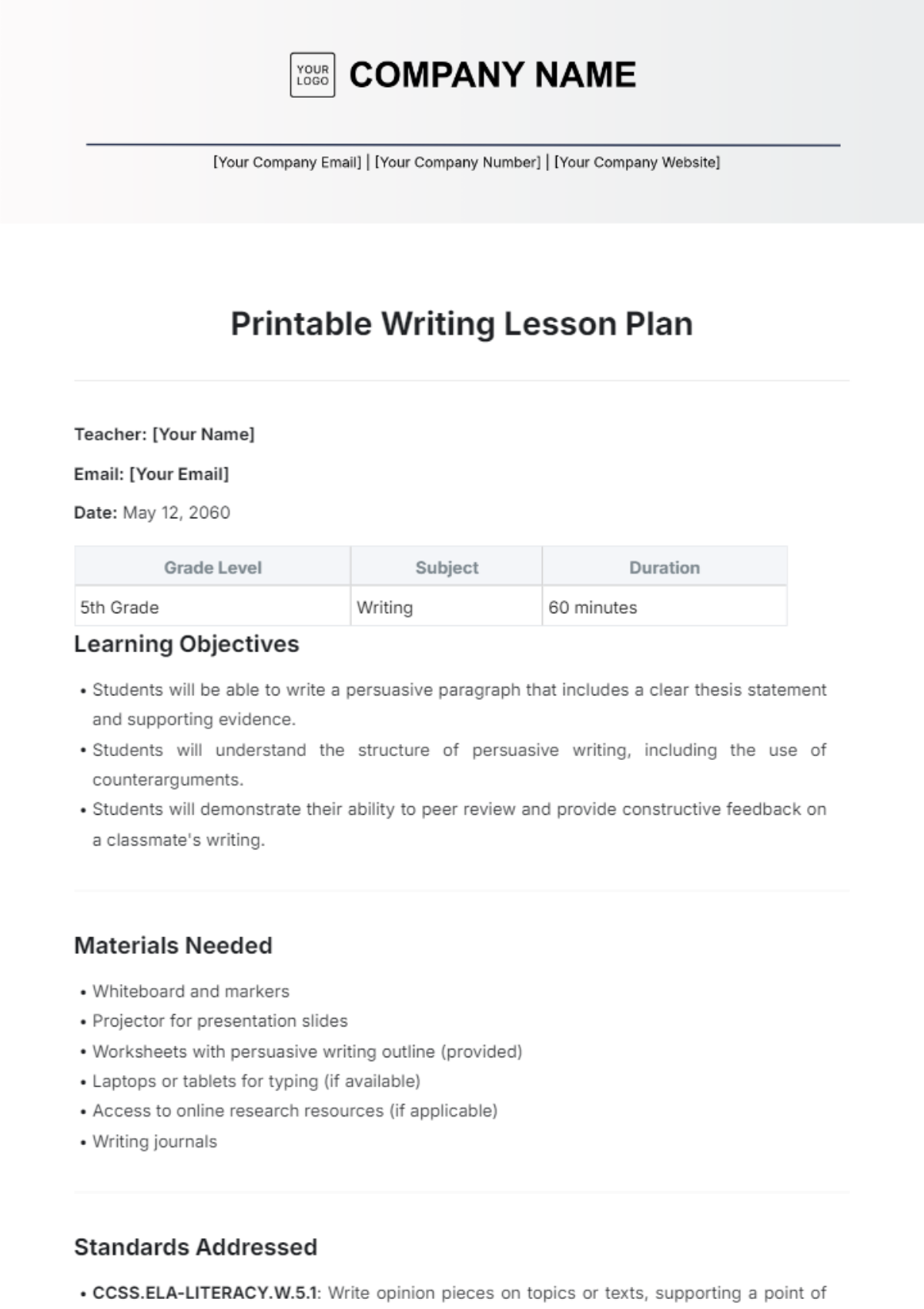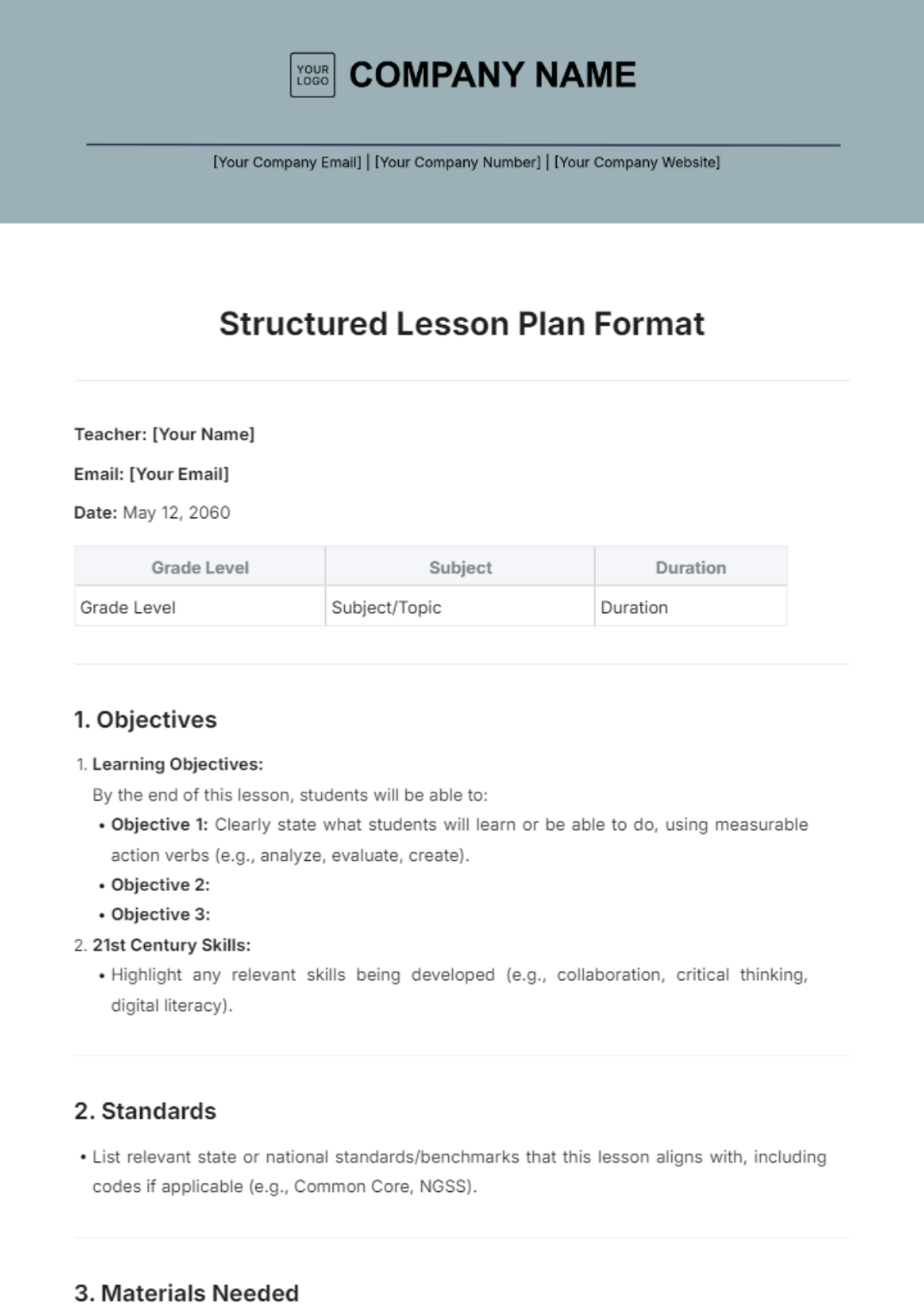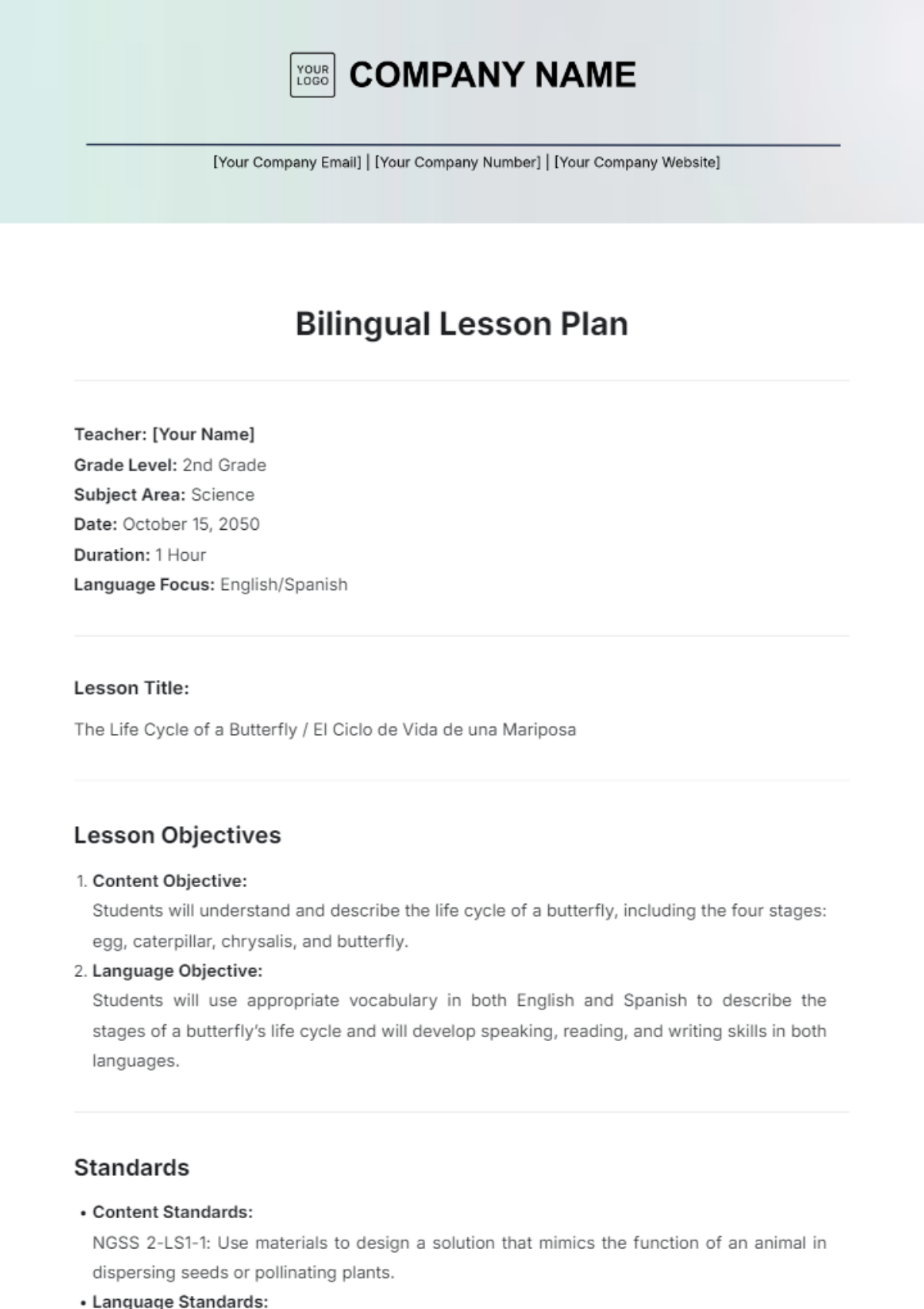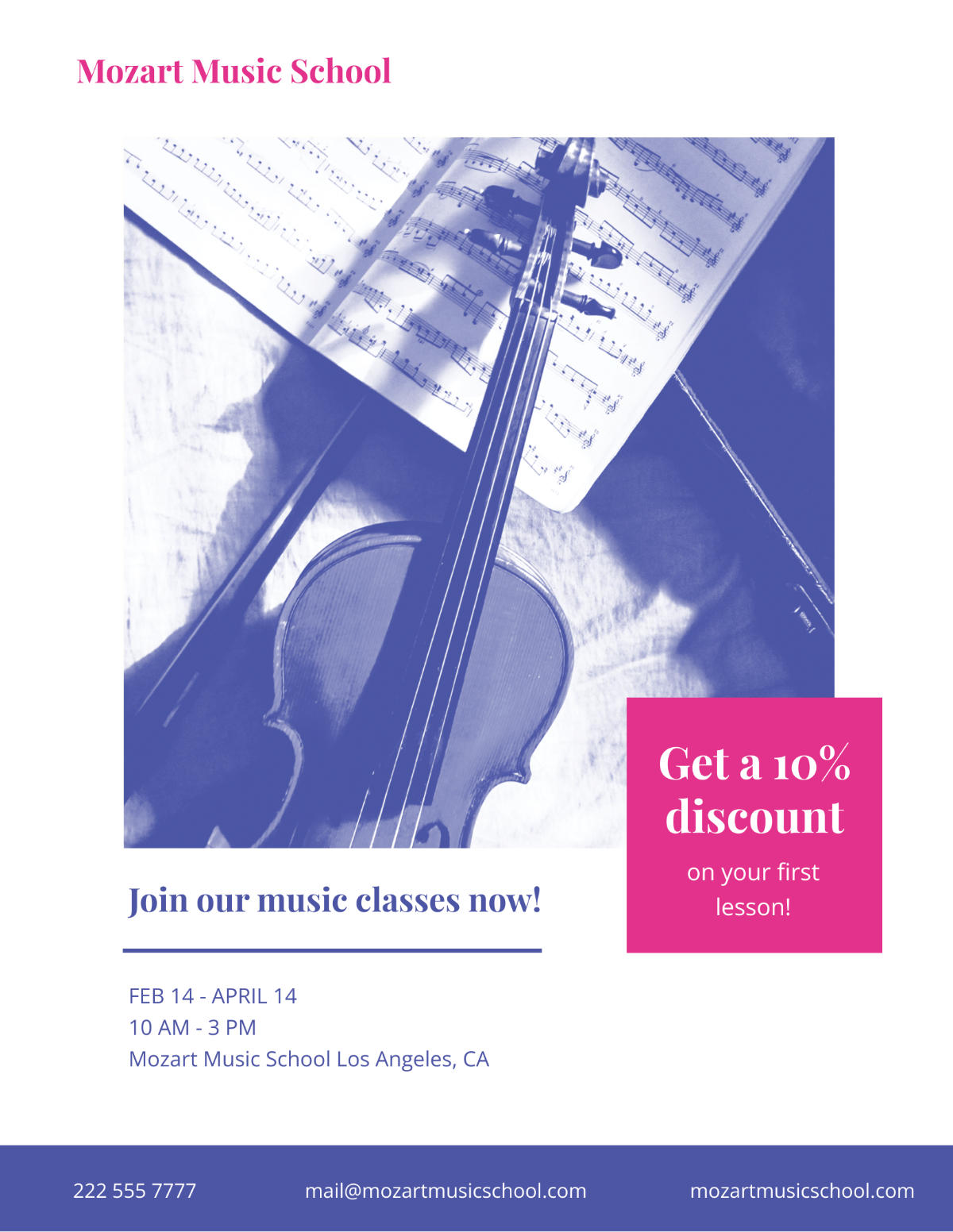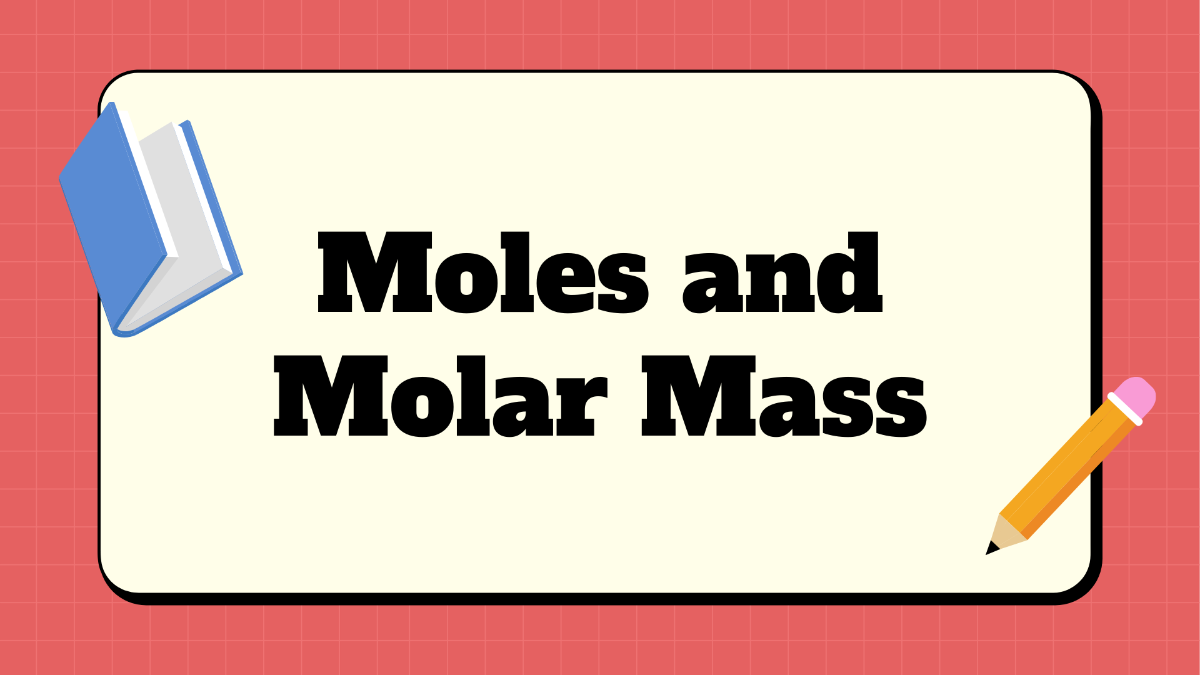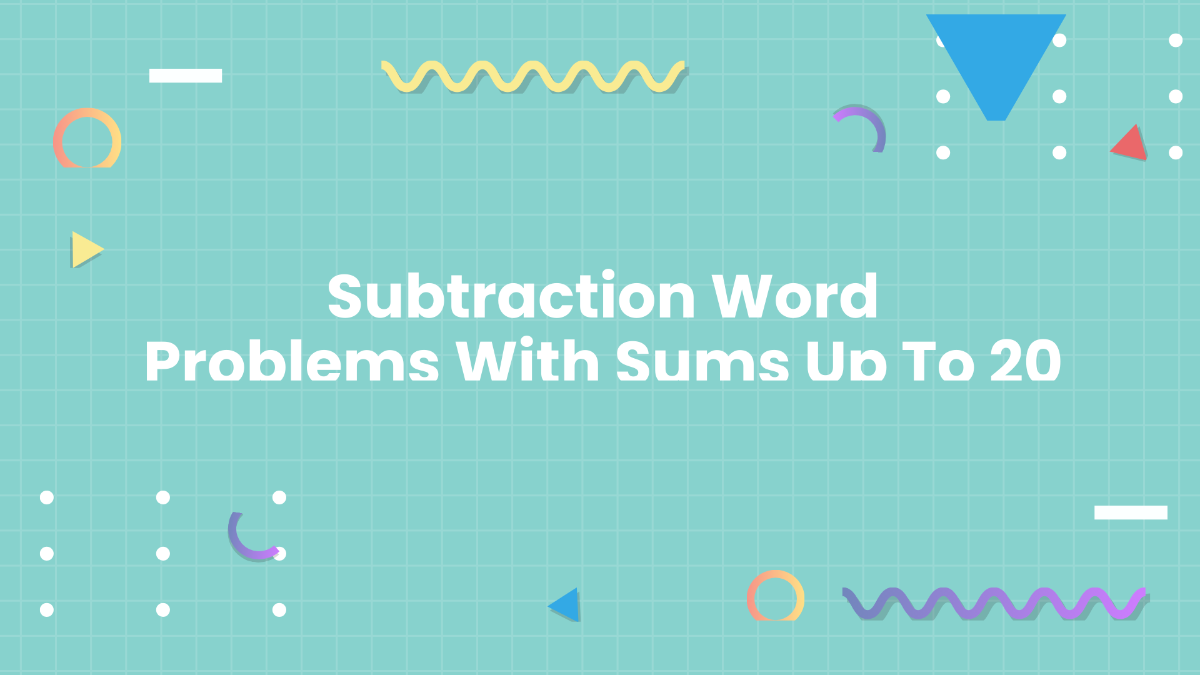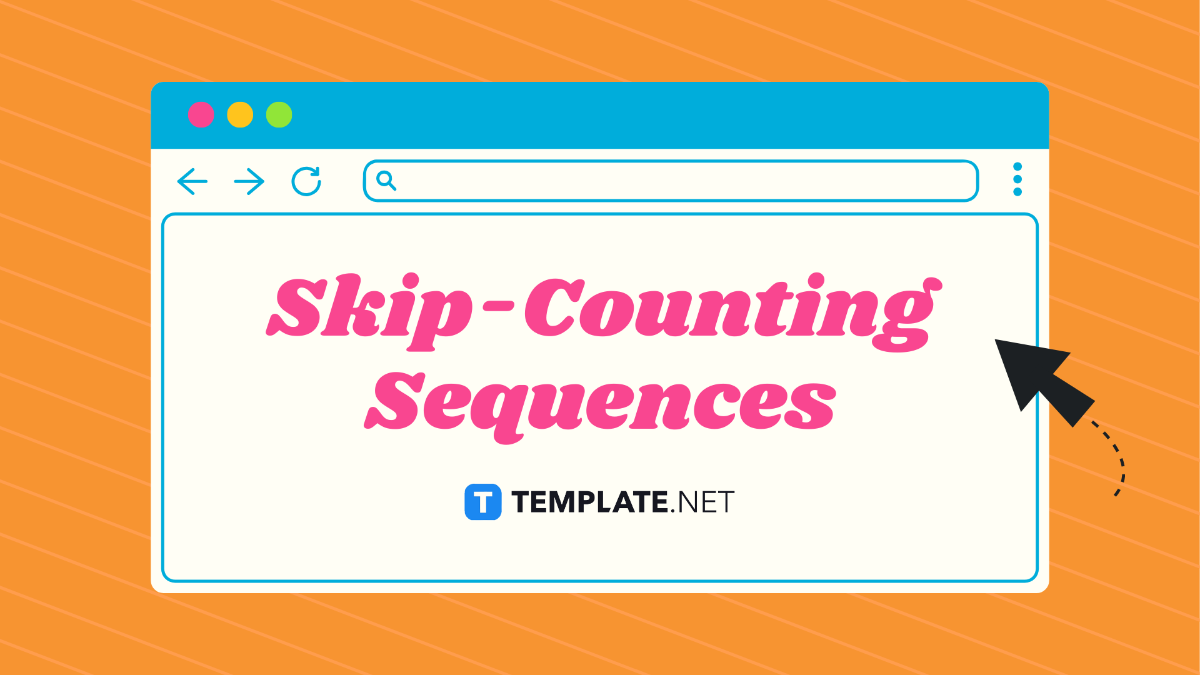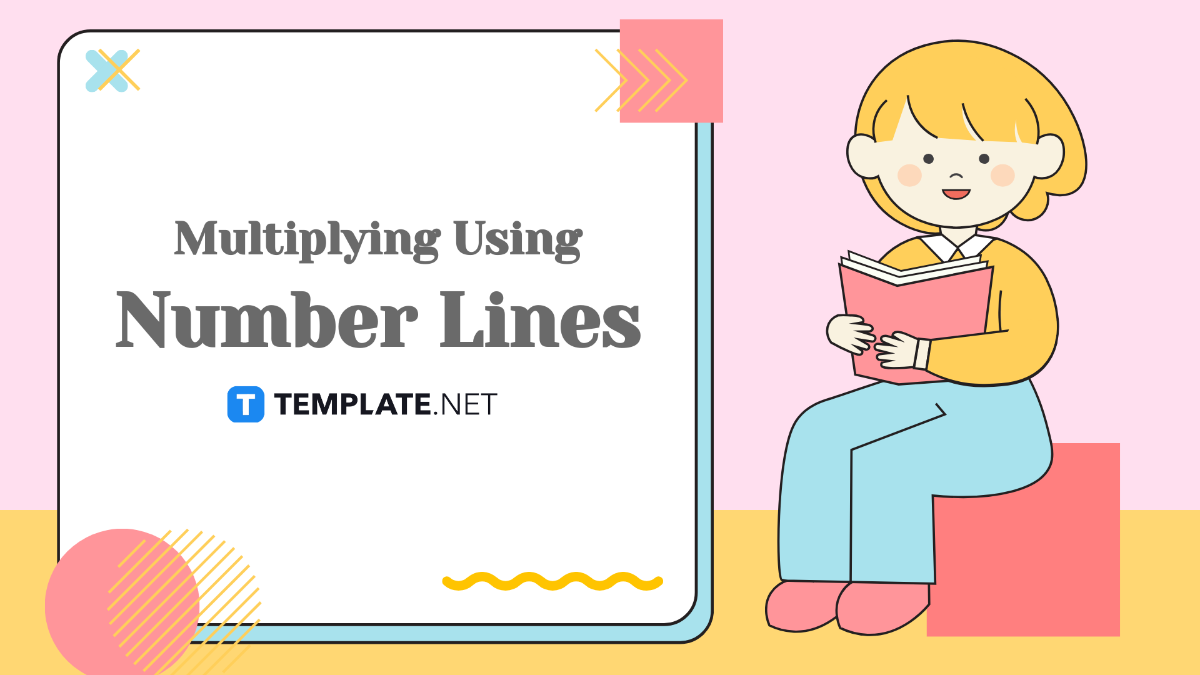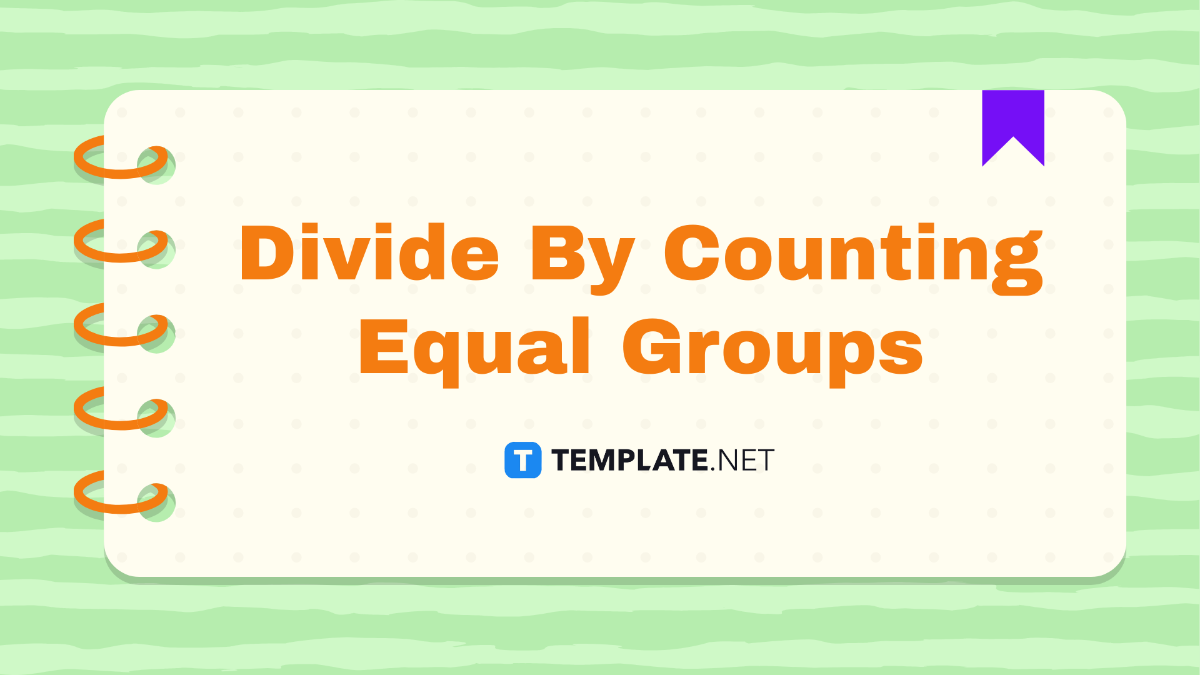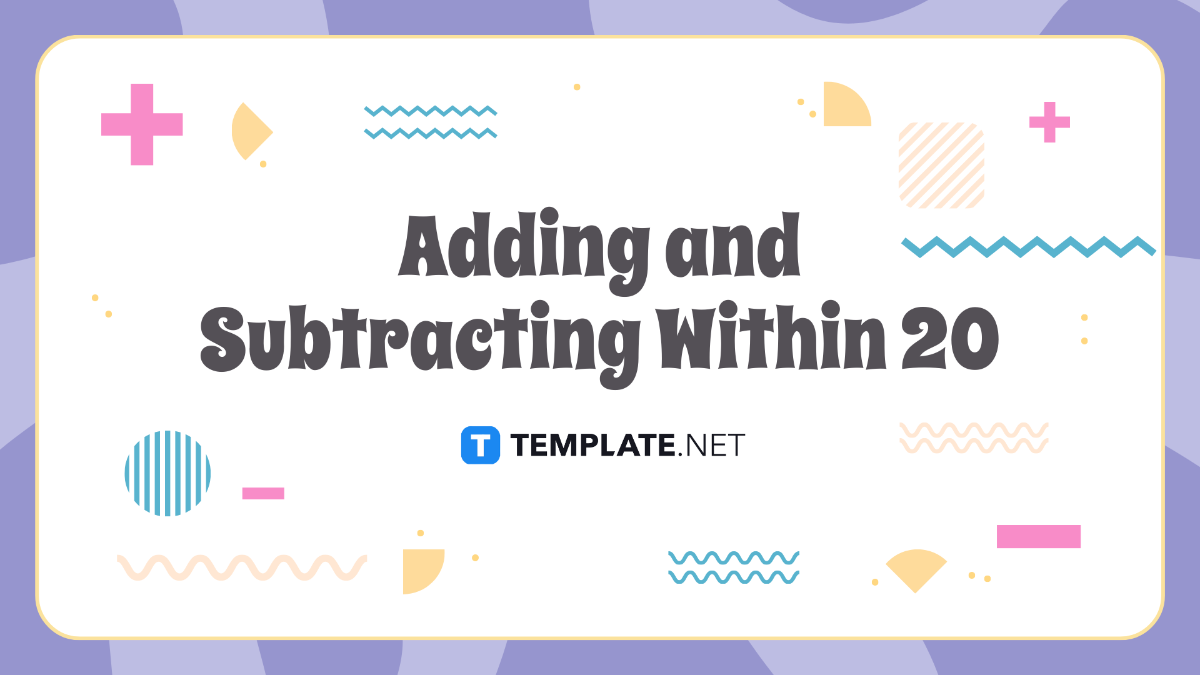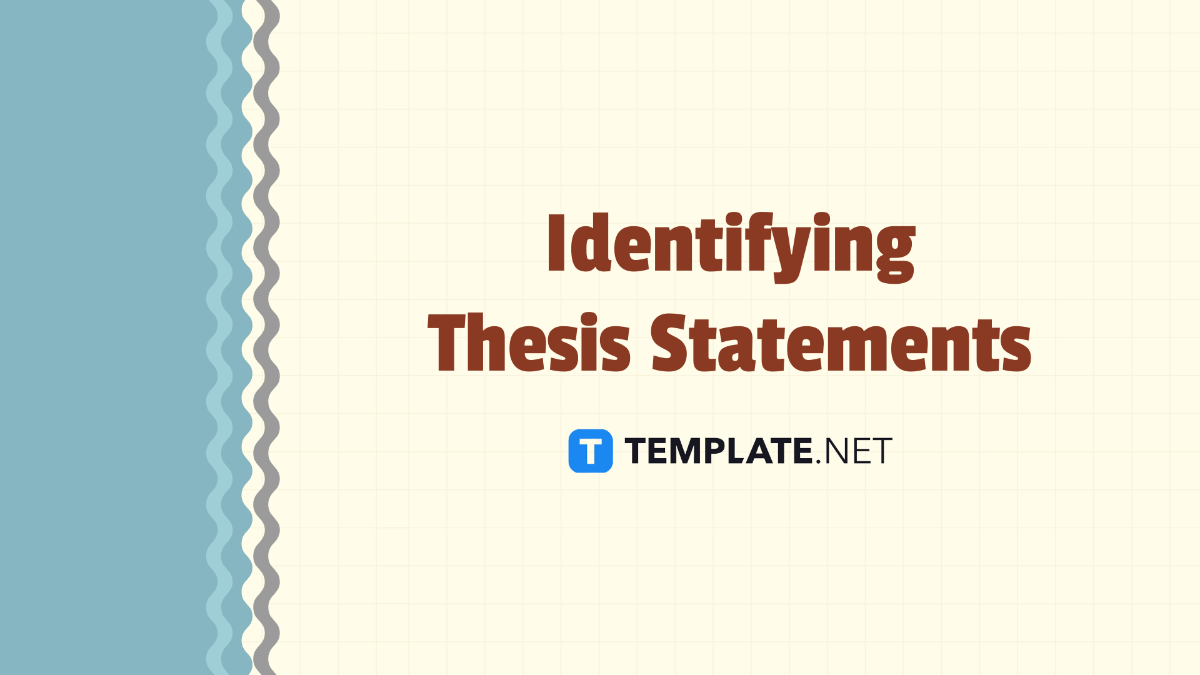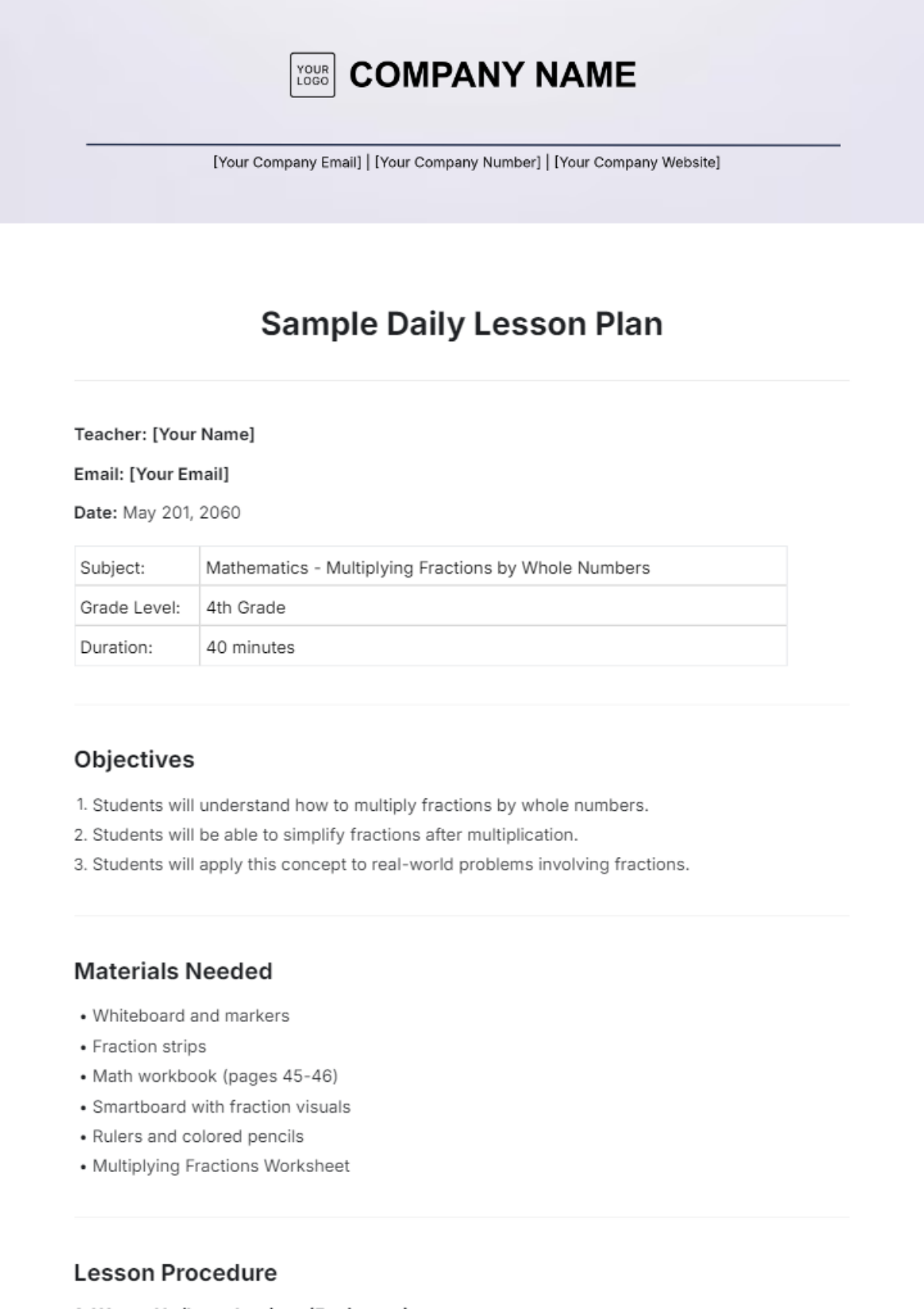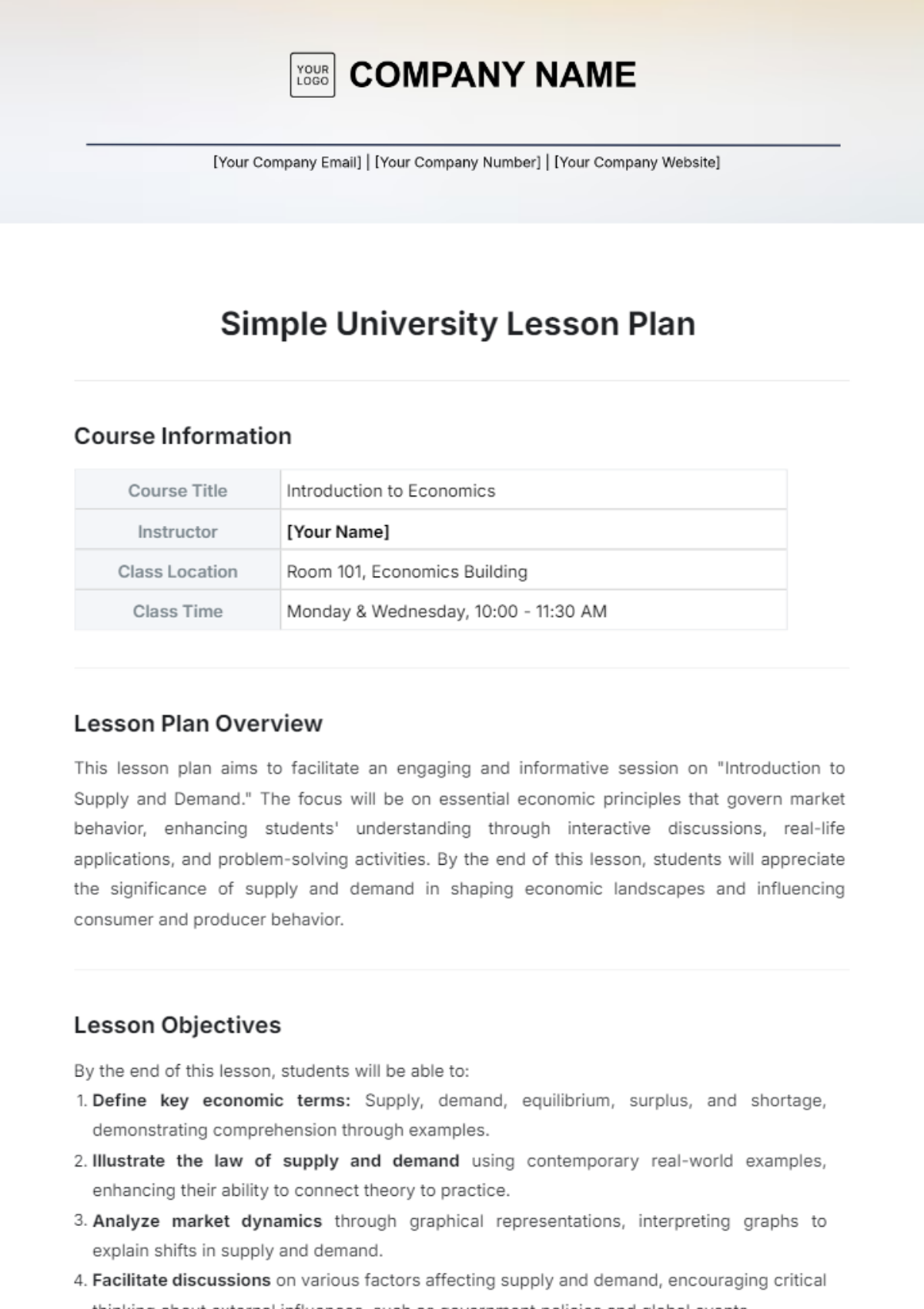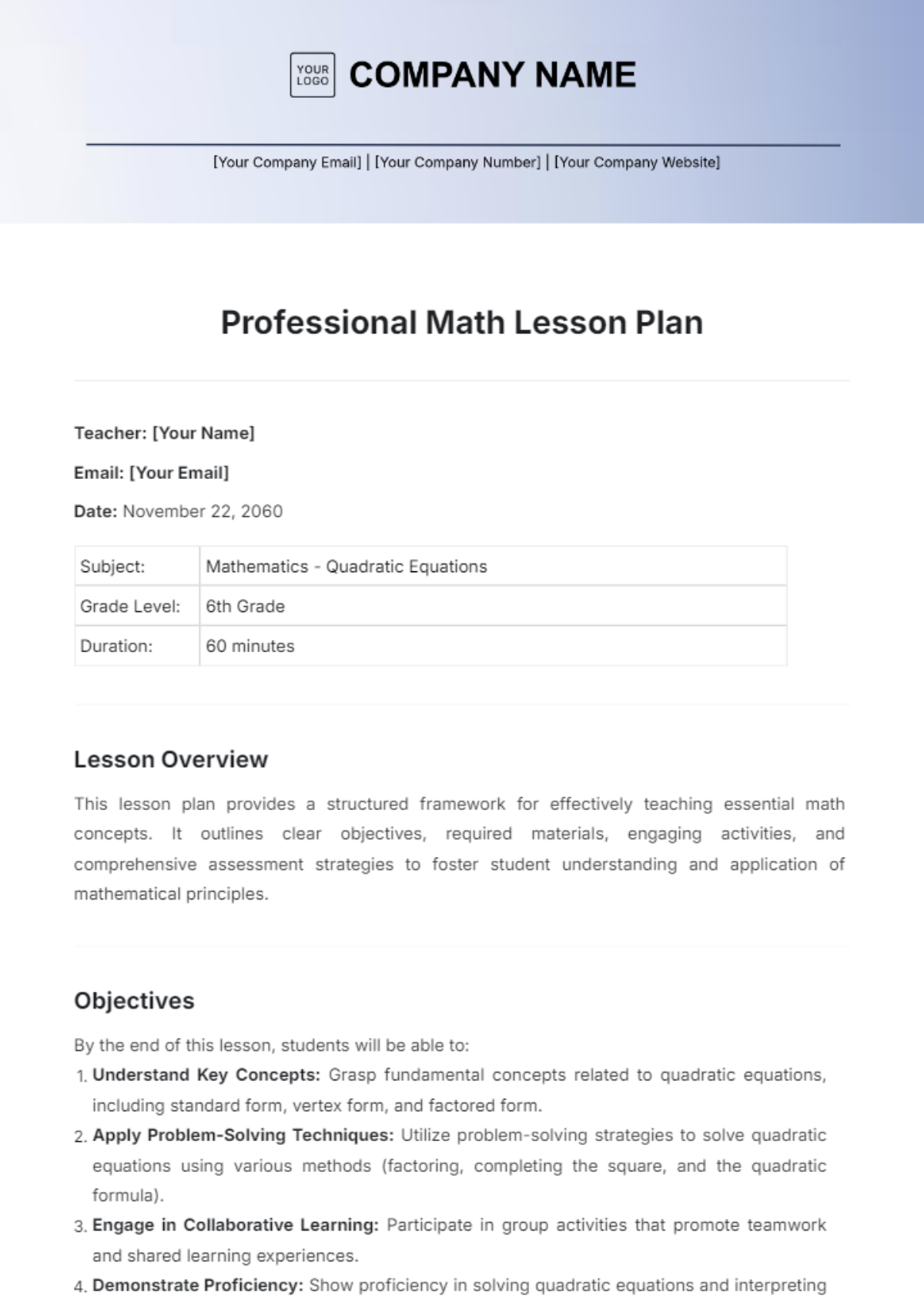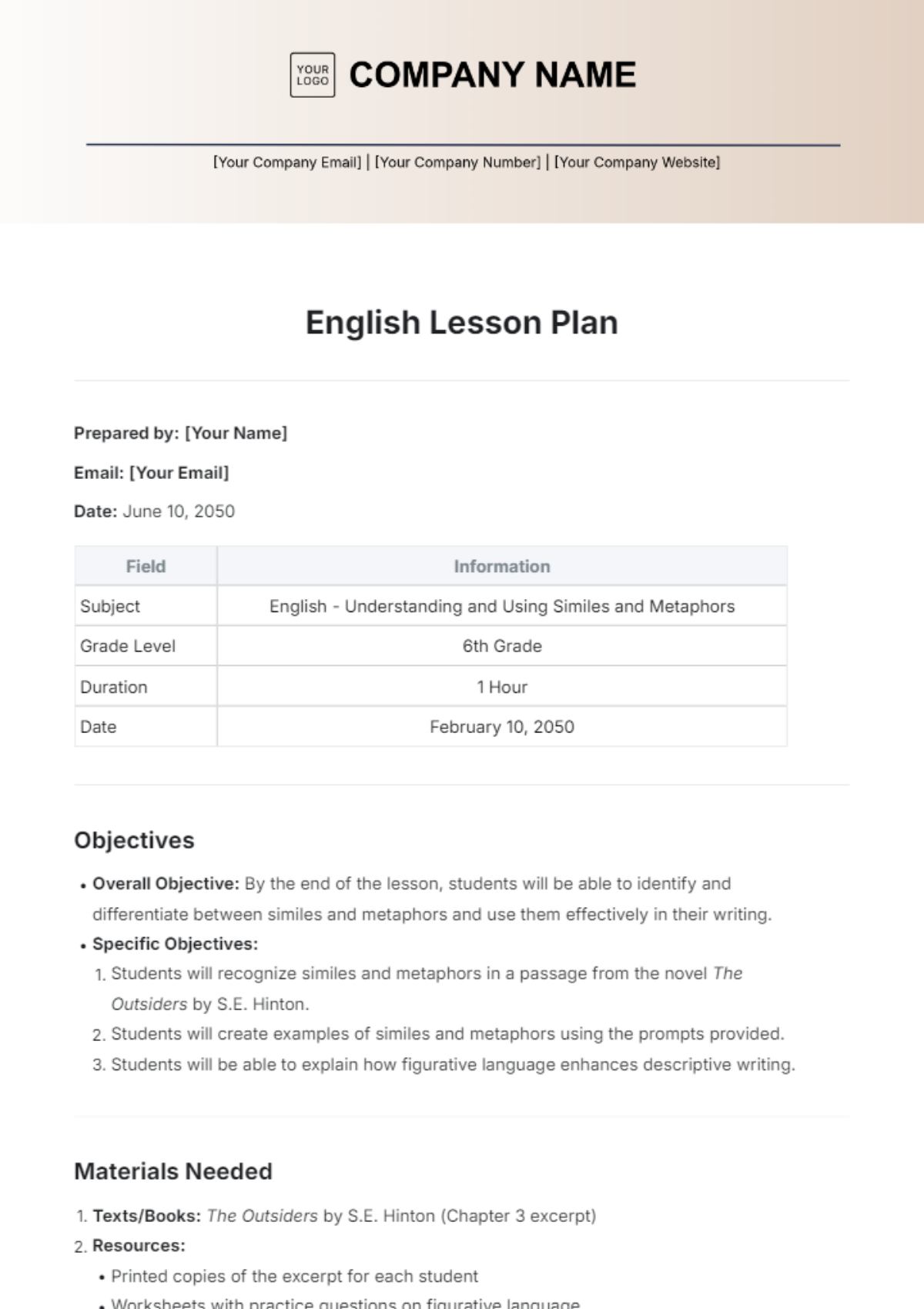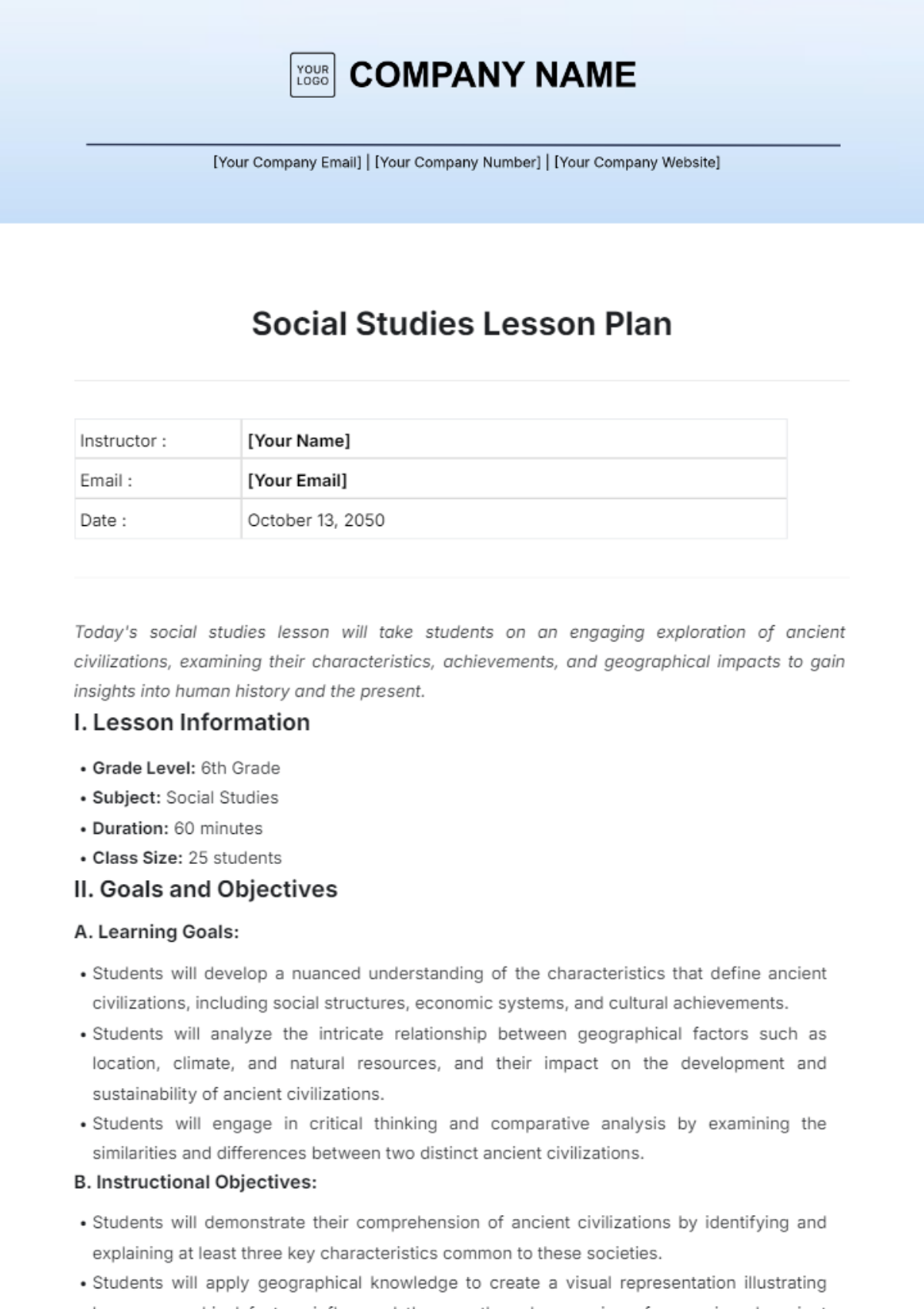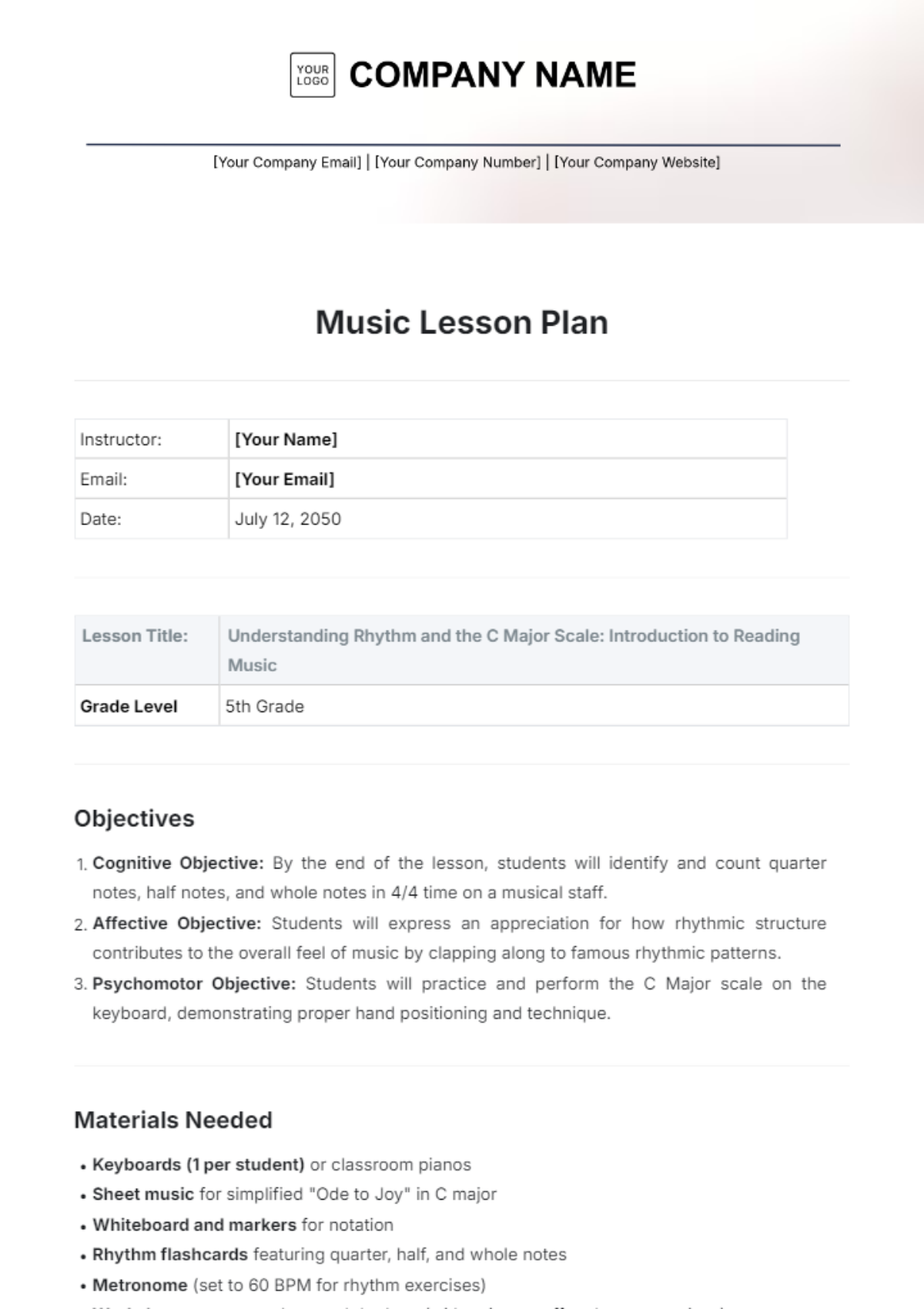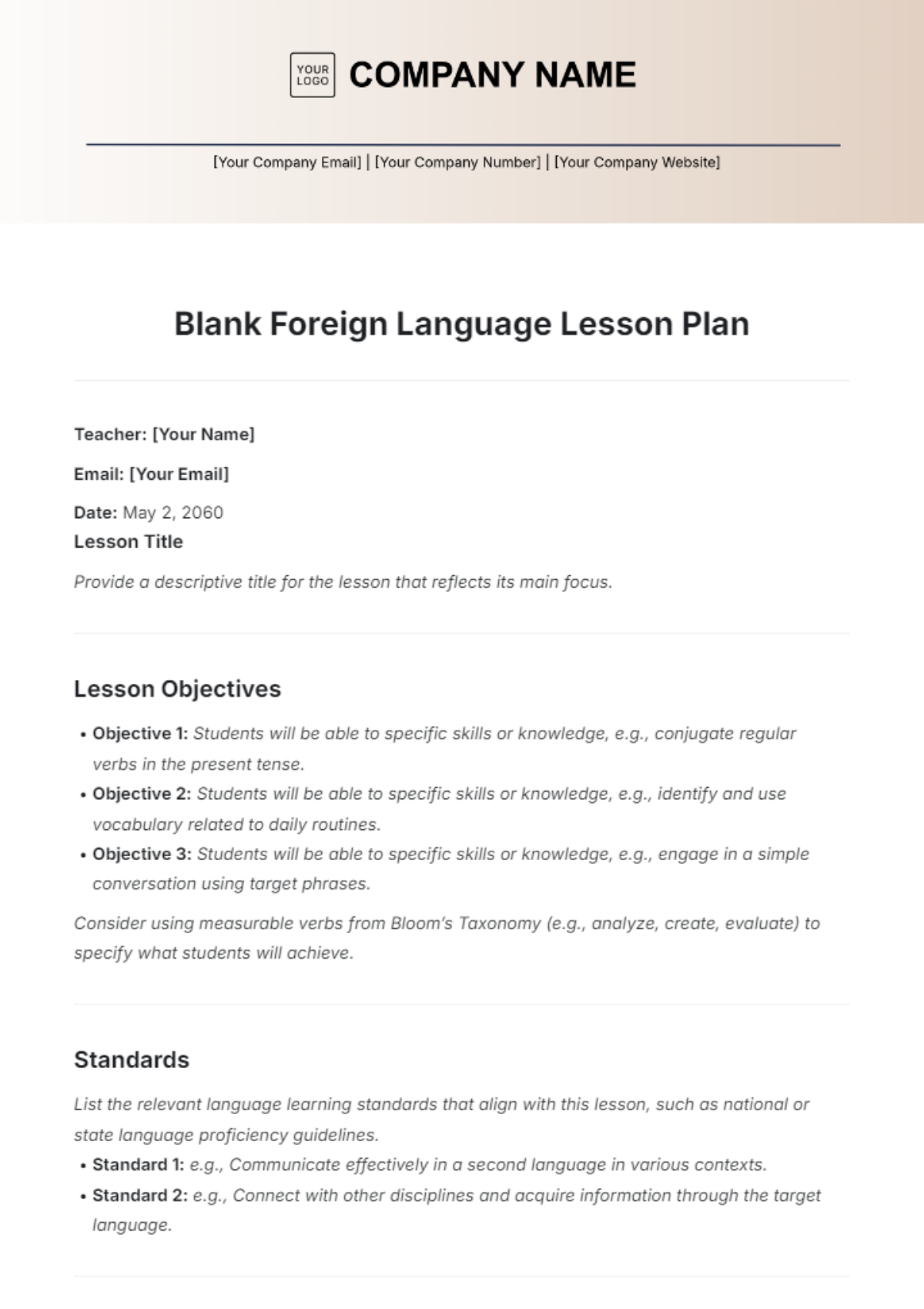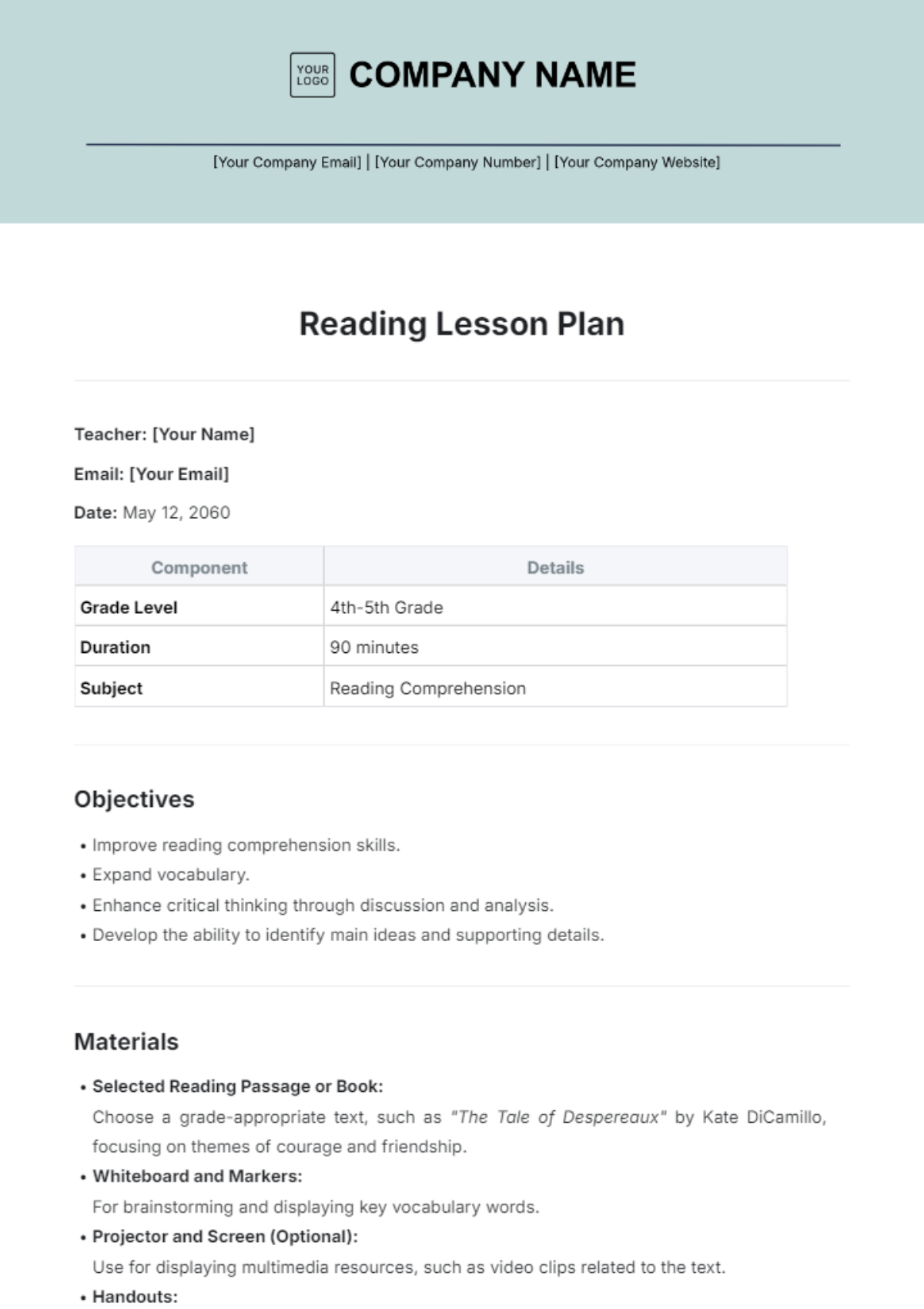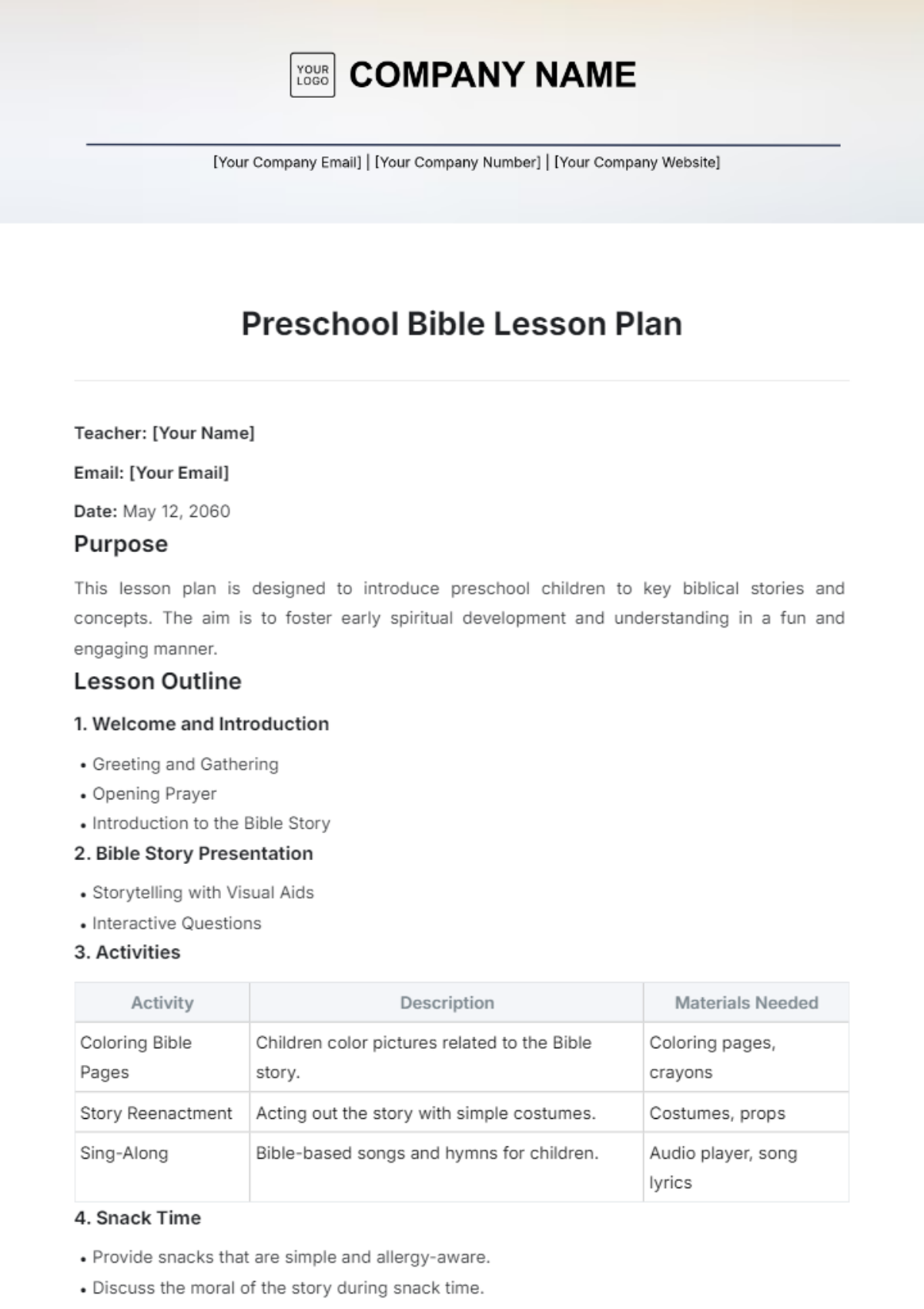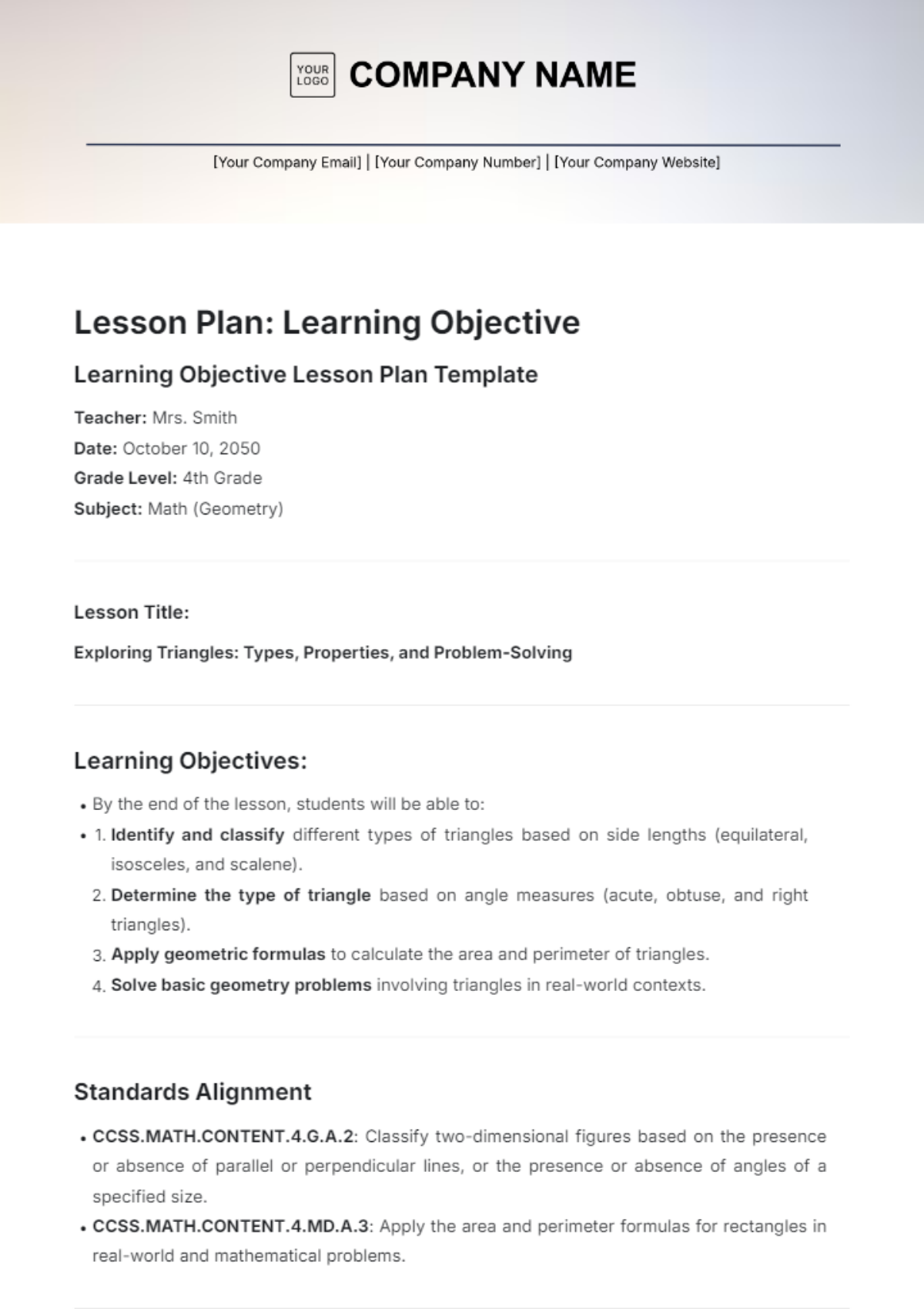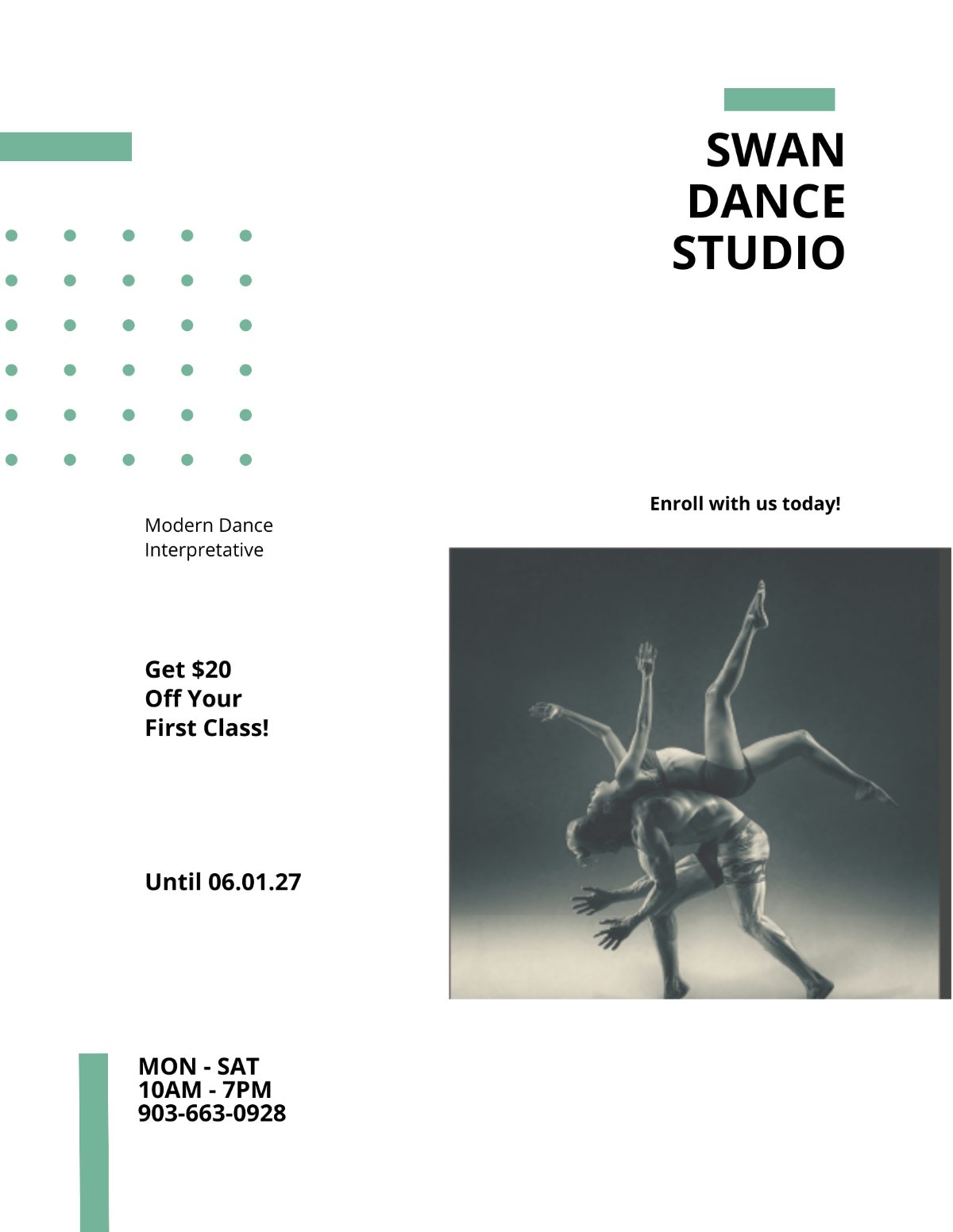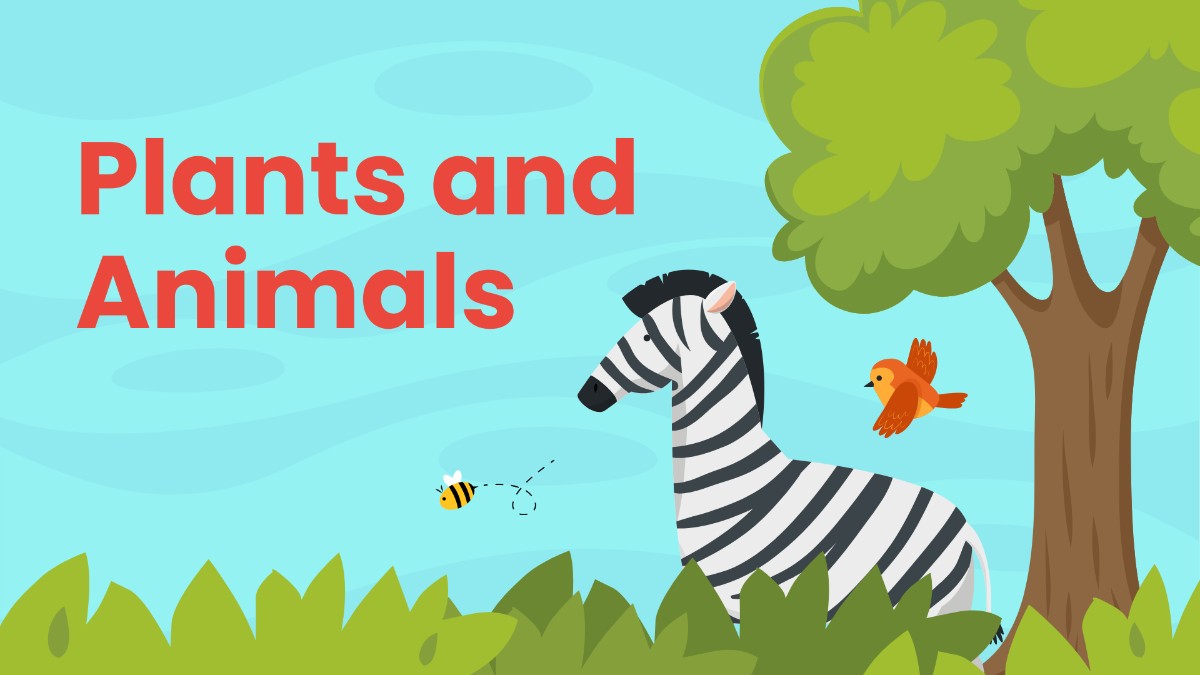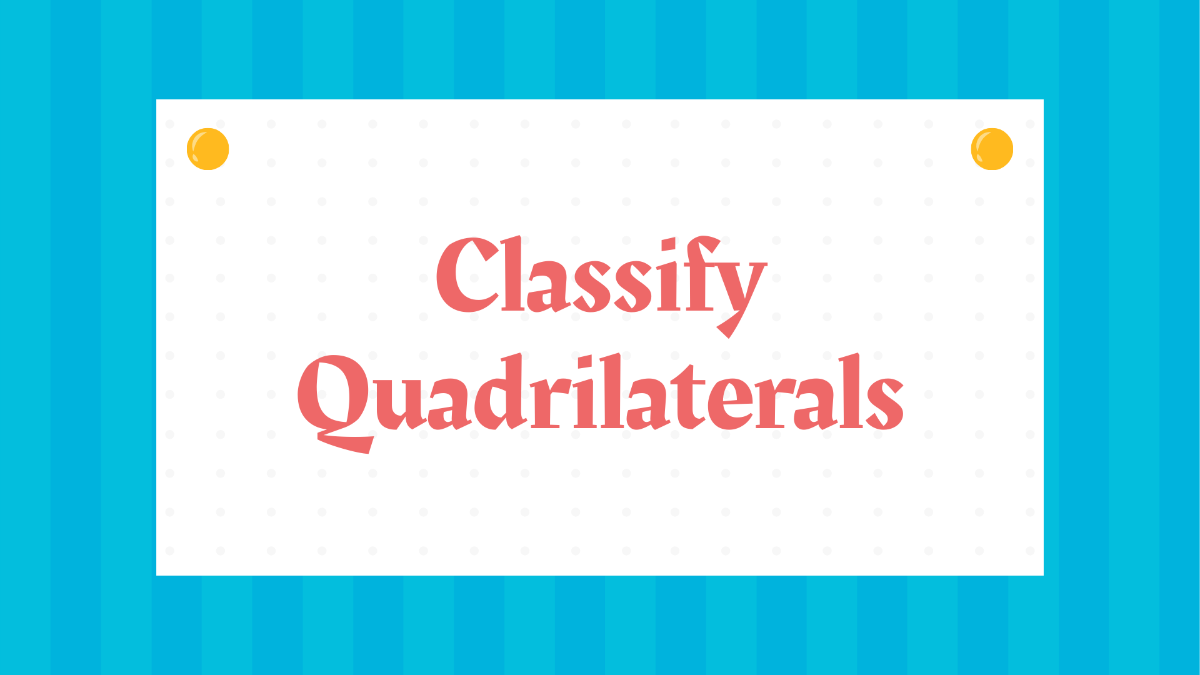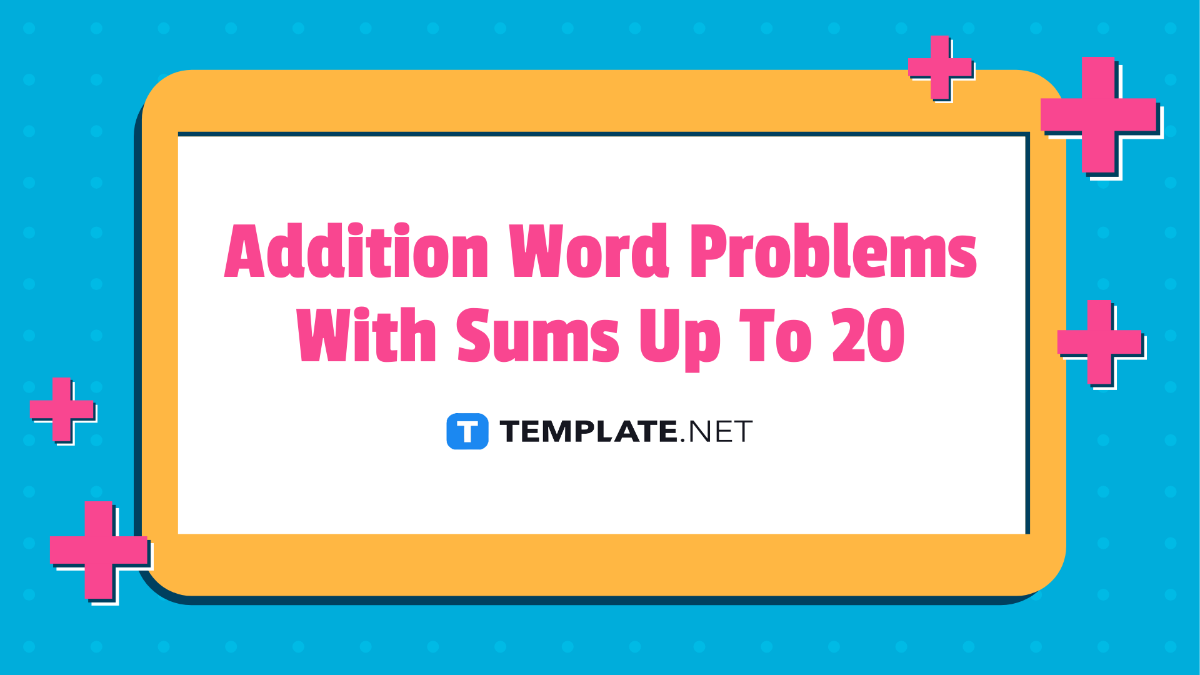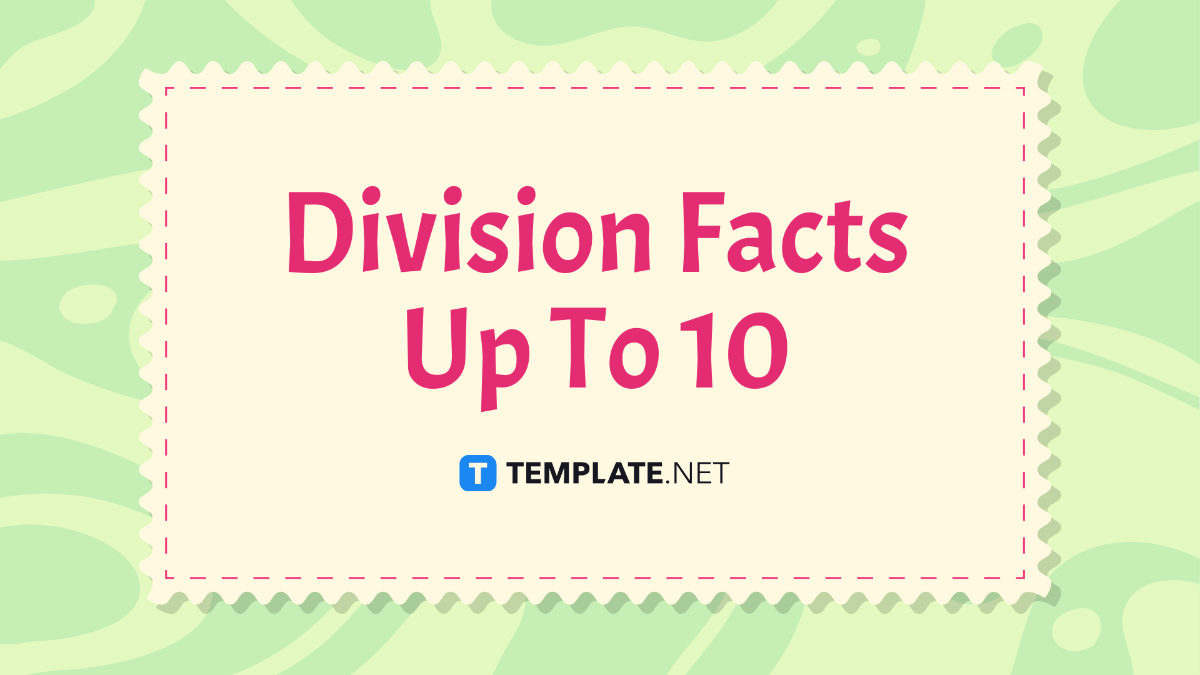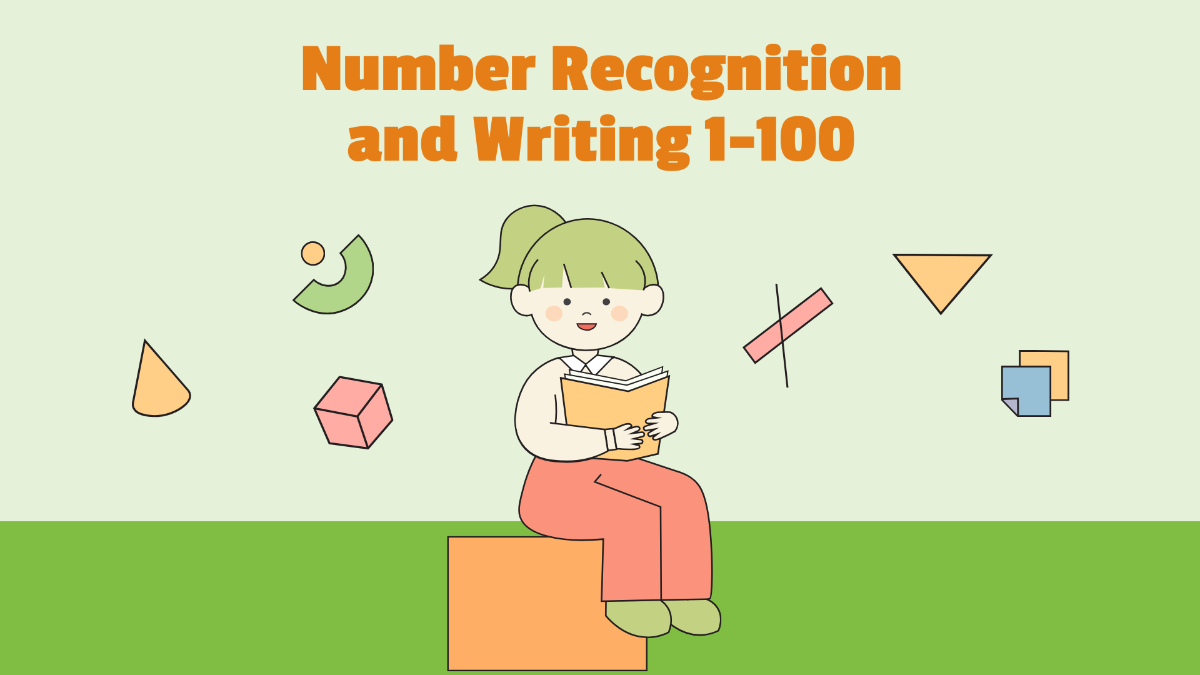Free Blank Foreign Language Lesson Plan Template
Blank Foreign Language Lesson Plan
Teacher: [Your Name]
Email: [Your Email]
Date: May 2, 2060
Lesson Title
Provide a descriptive title for the lesson that reflects its main focus.
Lesson Objectives
Objective 1: Students will be able to specific skills or knowledge, e.g., conjugate regular verbs in the present tense.
Objective 2: Students will be able to specific skills or knowledge, e.g., identify and use vocabulary related to daily routines.
Objective 3: Students will be able to specific skills or knowledge, e.g., engage in a simple conversation using target phrases.
Consider using measurable verbs from Bloom’s Taxonomy (e.g., analyze, create, evaluate) to specify what students will achieve.
Standards
List the relevant language learning standards that align with this lesson, such as national or state language proficiency guidelines.
Standard 1: e.g., Communicate effectively in a second language in various contexts.
Standard 2: e.g., Connect with other disciplines and acquire information through the target language.
Materials Needed
Textbook: Title and edition.
Technology: e.g., projector, computer, language learning software.
Handouts: Worksheets, vocabulary lists, grammar charts.
Visual Aids: Flashcards, images, realia (objects from everyday life).
Ensure that materials cater to different learning styles (visual, auditory, kinesthetic).
Lesson Procedures
A. Introduction (5-10 minutes):
Engage students with a brief warm-up activity (e.g., a quick review game or question-related to the previous lesson).
Clearly state the lesson objectives and relevance to real-life language use.
B. Direct Instruction (15-20 minutes):
Present new content using various teaching methods (e.g., interactive lectures, storytelling, multimedia presentations).
Introduce key vocabulary and grammar points, ensuring to model pronunciation and context of usage.
Incorporate cultural elements (e.g., customs, traditions) related to the language being taught.
C. Guided Practice (15-20 minutes):
Facilitate activities where students practice the new content in pairs or small groups (e.g., role-playing scenarios, structured dialogues).
Provide immediate feedback and support as students engage in practice.
D. Independent Practice (15-20 minutes):
Assign activities that students can complete individually, such as a writing assignment, listening comprehension exercise, or vocabulary quiz.
Encourage students to apply what they’ve learned creatively (e.g., writing a short story, or creating a dialogue).
Assessment
Formative Assessment: Use informal methods such as observation, exit tickets, or quick quizzes to gauge student understanding during the lesson.
Summative Assessment: Outline a specific assessment tool (e.g., a test, project, or presentation) to evaluate student learning at the end of the unit.
Differentiation
Explain strategies for accommodating diverse learning needs, such as:
For advanced learners: Provide challenging materials or tasks that encourage deeper exploration of the language.
For struggling learners: Offer additional resources or modified assignments to support their understanding.
Consider varying group dynamics to promote peer learning (e.g., mixed-ability groups).
Homework
Assign meaningful homework that reinforces the lesson objectives. Examples include:
Vocabulary flashcards to practice new words.
Listening to a podcast in the target language and summarizing key points.
Writing a short paragraph using the target grammar structures and vocabulary.
Reflection
After the lesson, jot down thoughts on the following:
What aspects of the lesson were successful?
What challenges did students face?
How will this inform your future lesson planning?
Consider student feedback and assessment results to guide your reflections.
